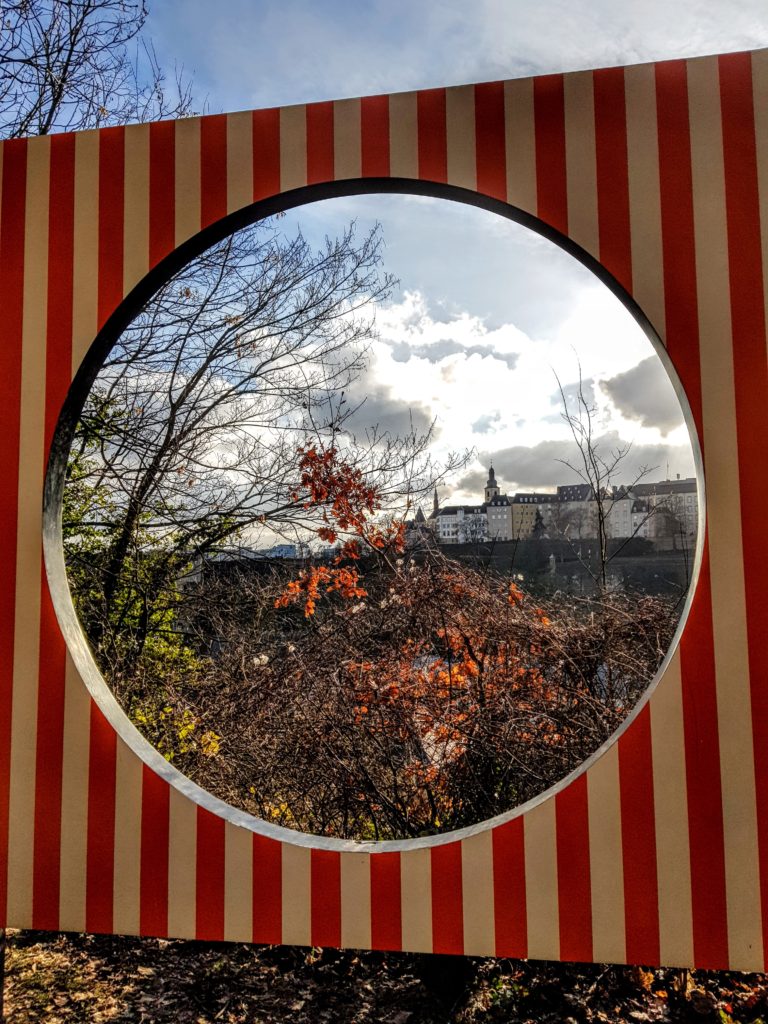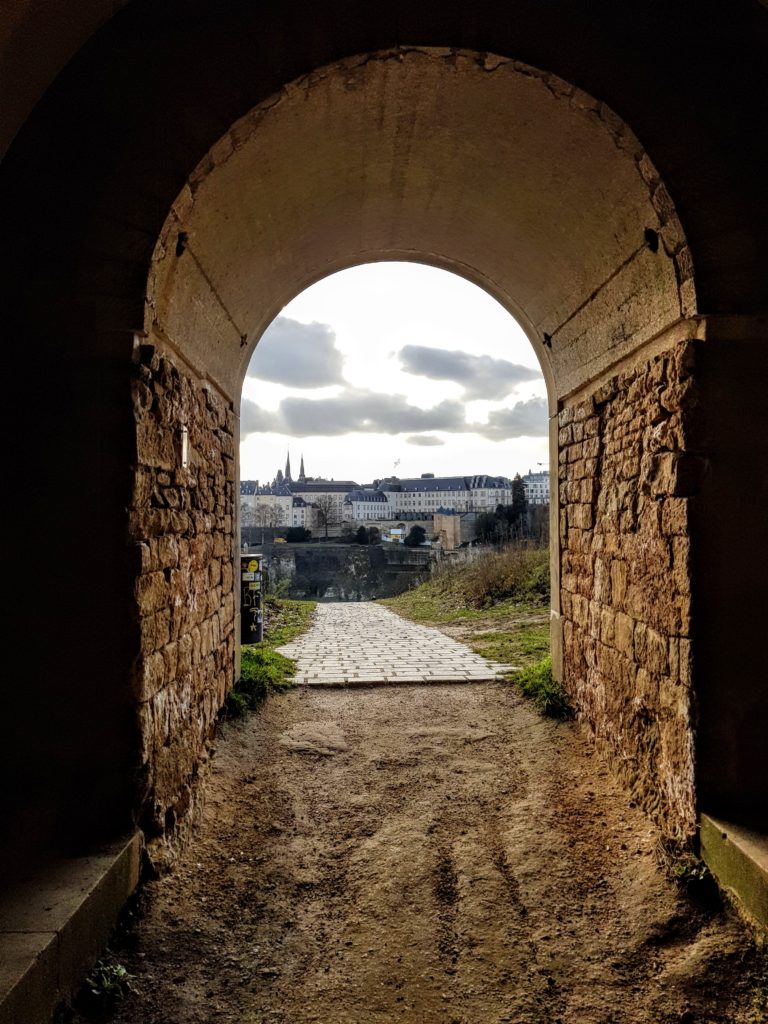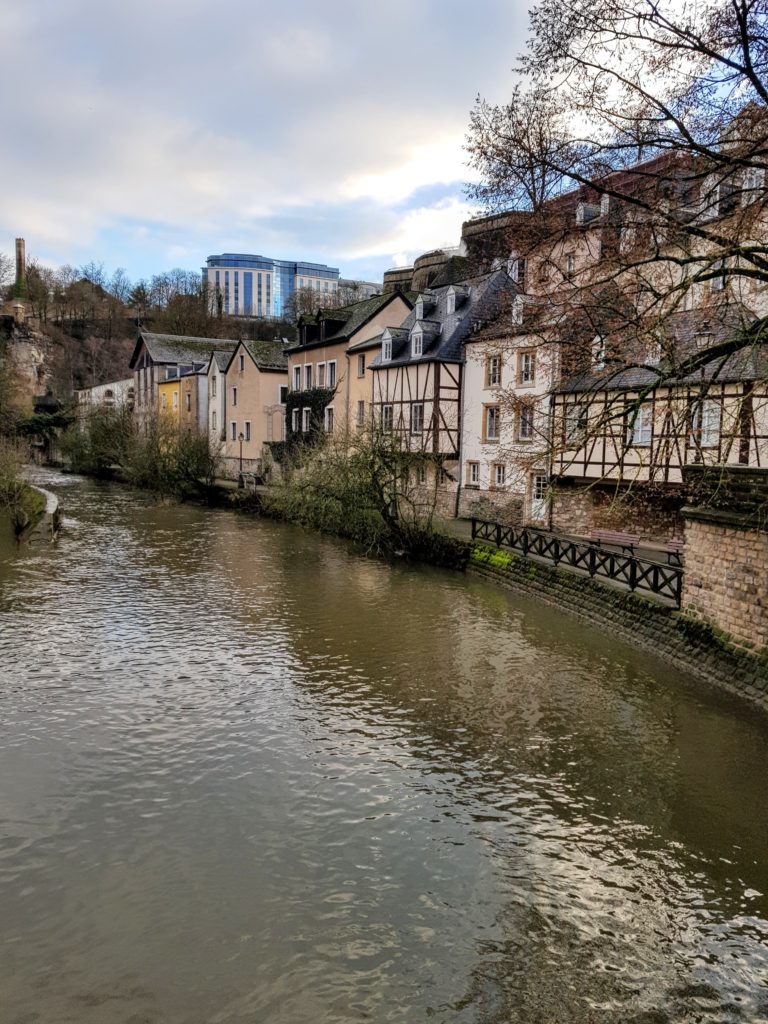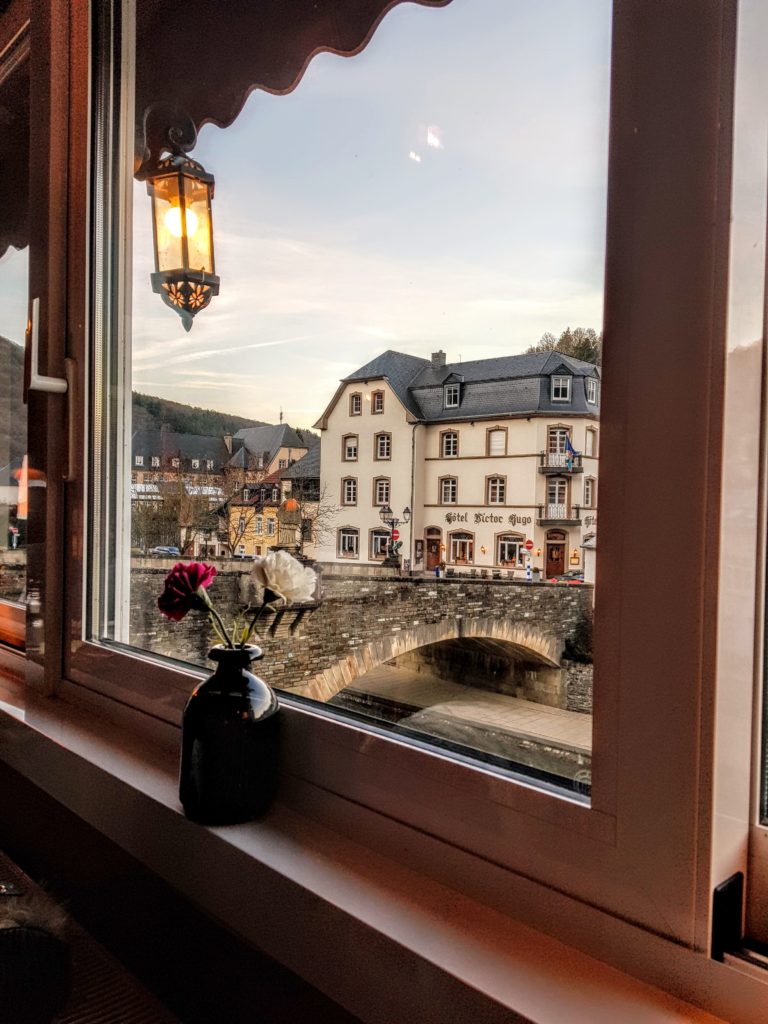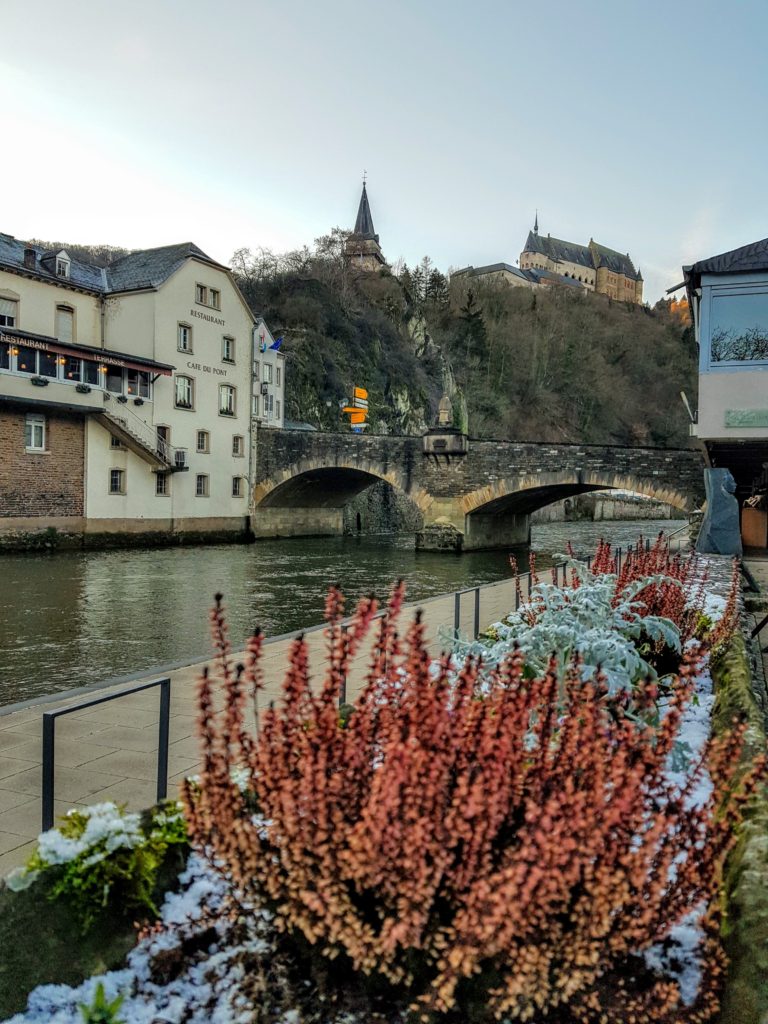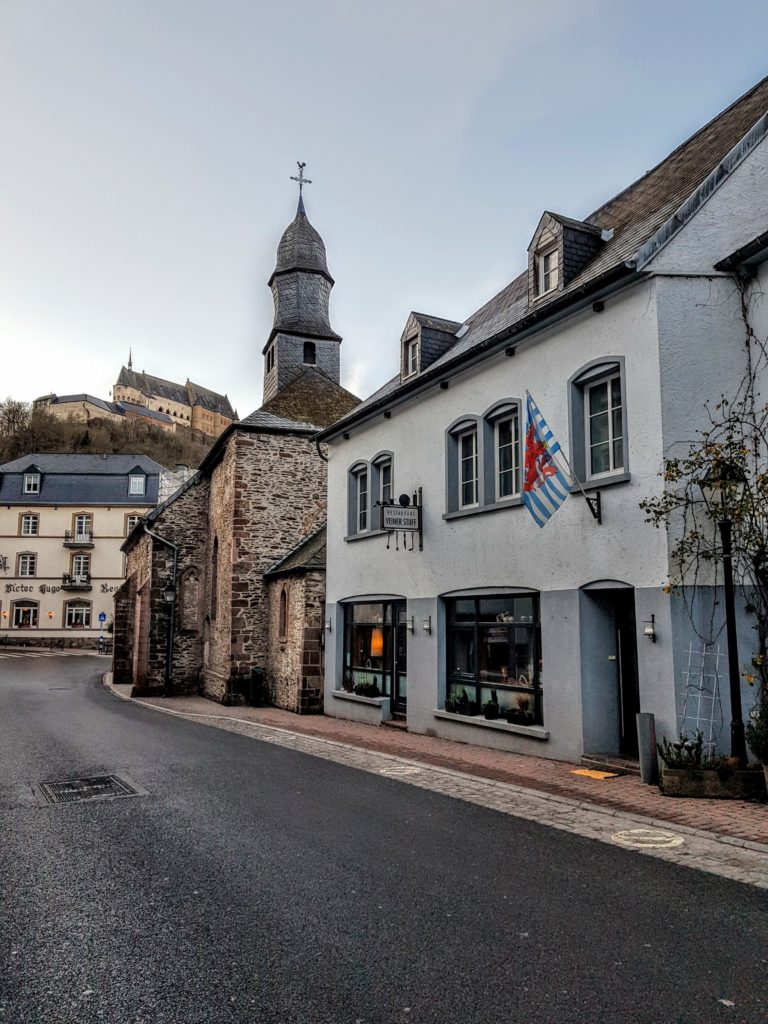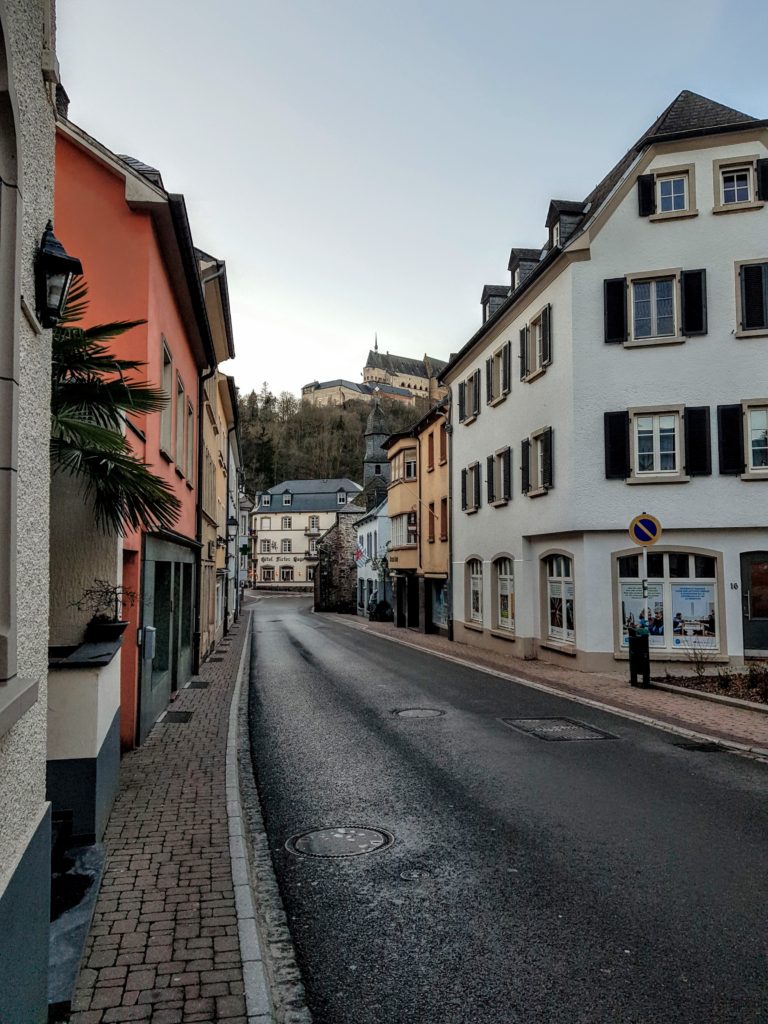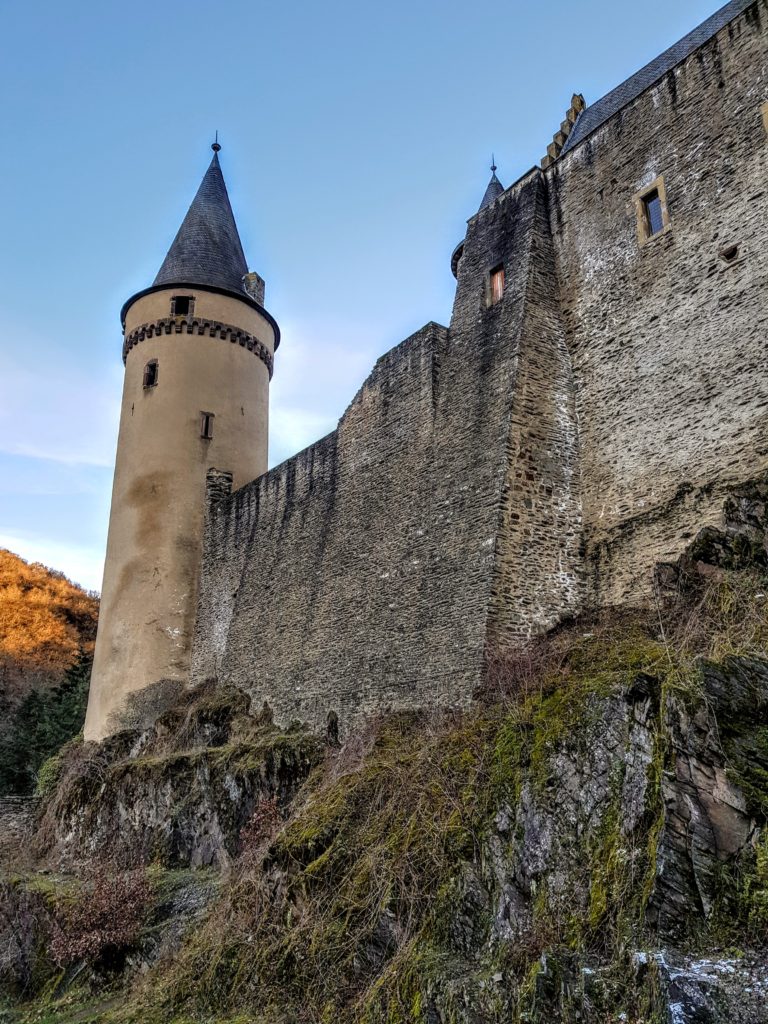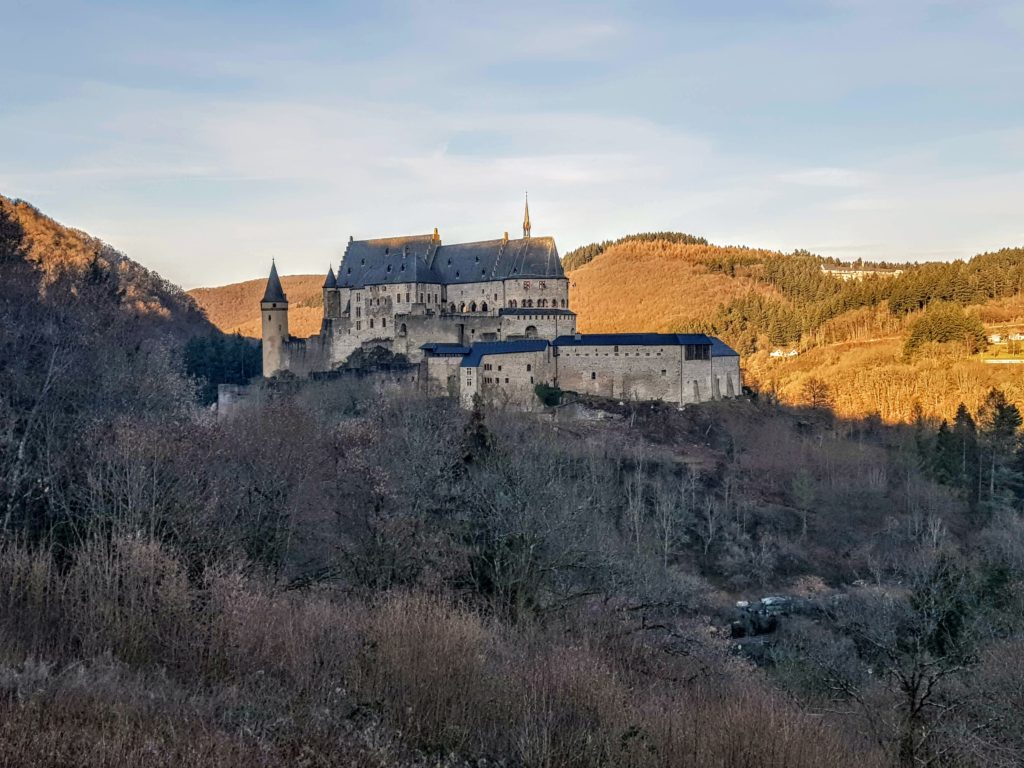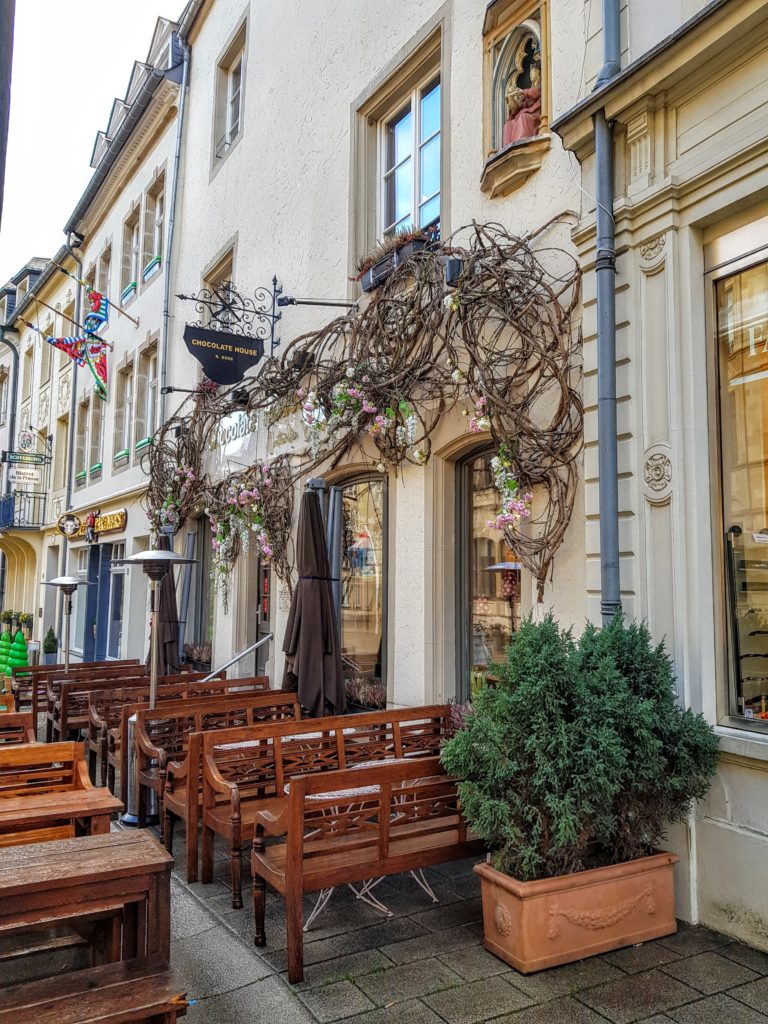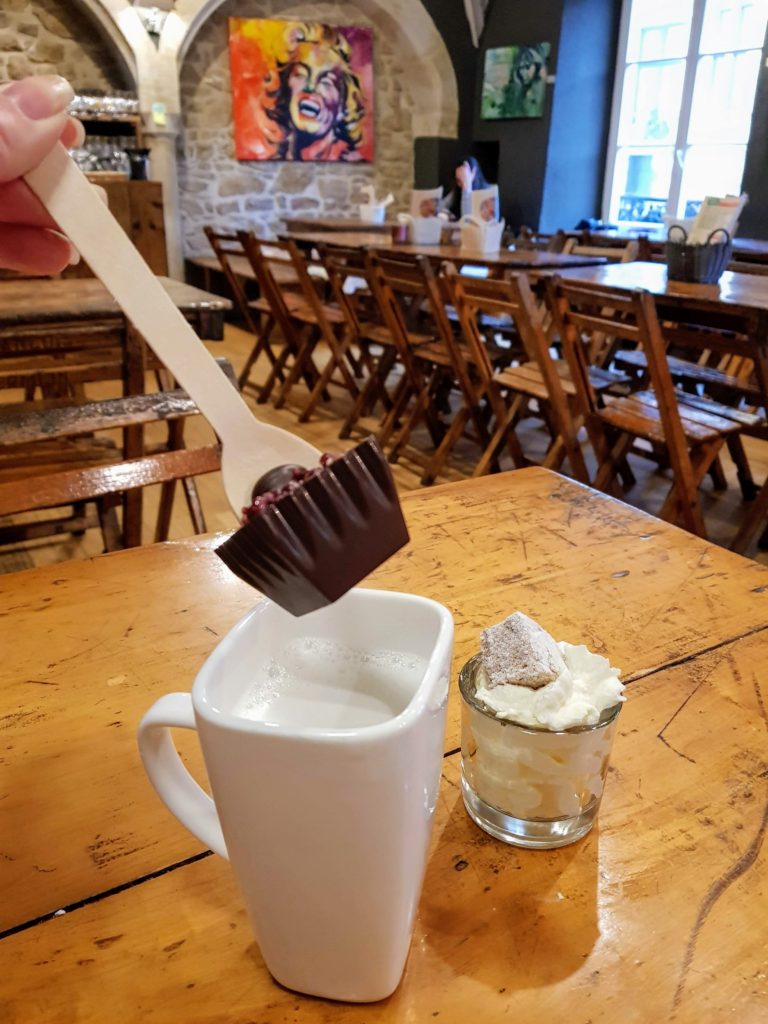Luxembourg – what to visit
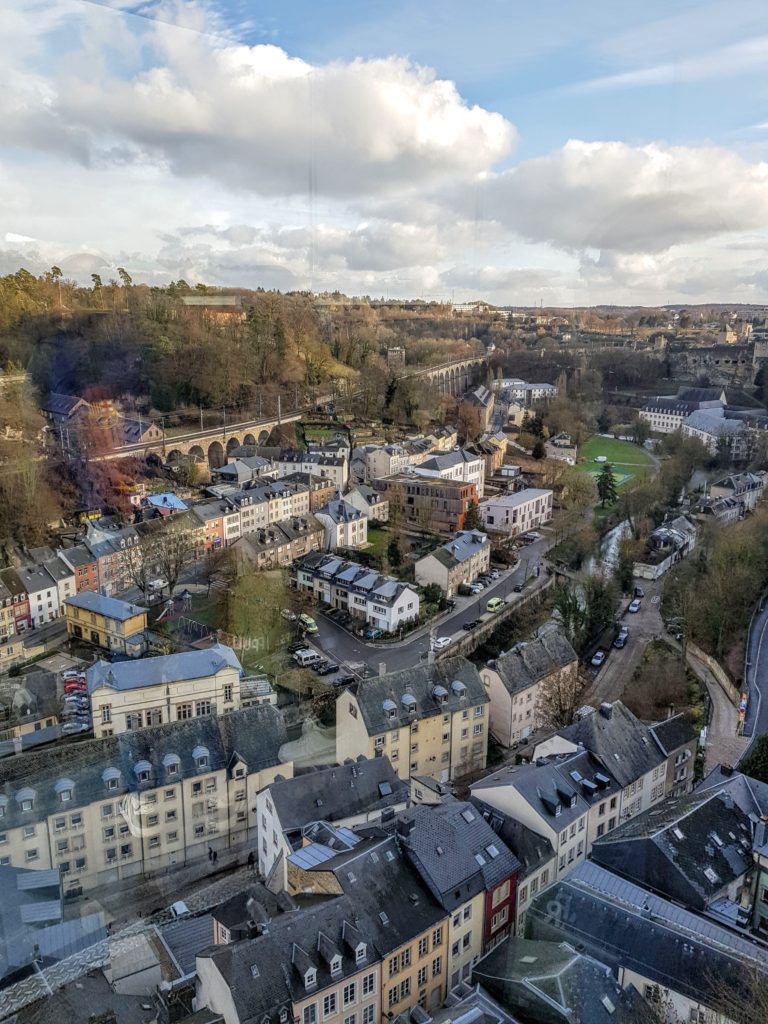
Hey hey! My January is quite intensive so far but I am not complaining at all! This year I am turning 30 years (I am old, I know 🙁 ) and I made a promise to myself – 30 before 30. What does this mean? I am planning to visit 30 countries before turning 30. Luxembourg was my number 28. Let’s find together what to visit while in Luxembourg.
Luxembourg was on my radar for a long time now as one of my oldest friends lives there. Finally I found time to visit her and I had an amazing time! Bulgarian hospitality is a thing, people!
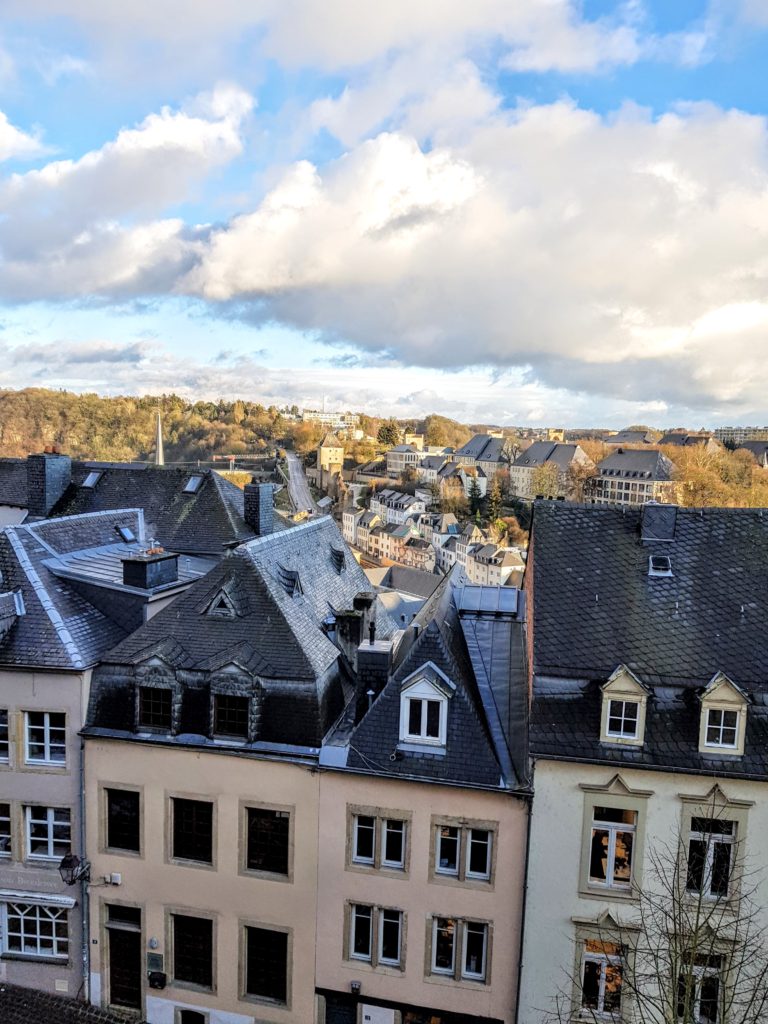
Here are some important things to know before you go:
- The country itself is not as tiny as you might think and there are plenty of interesting things to visit.
- They speak 3 official languages but the most used in Luxembourg city is the French one.
- Luxembourg is quite expensive country, don’t be surprised.
- The most touristic places in Luxembourg city are easily reachable by foot, if you check Google maps it always shows 20 minutes walking distance, so funny!
- Luxembourg is a really international country. This is why you can find every type of restaurant you want to visit!
- The weather is pretty unpredictable. It is normally cold and humid during the winter. During my first day there I experienced rain, sun, hail storm and snow within three hours! Yes, it is absolutely crazy!
Transportation
Luxembourg can be reached by every type of transportation. I went by plane as Ryanair has cheap flights from Barcelona to Luxembourg. Unfortunately there are just few low cost destinations and the rest of the flights are quite expensive.
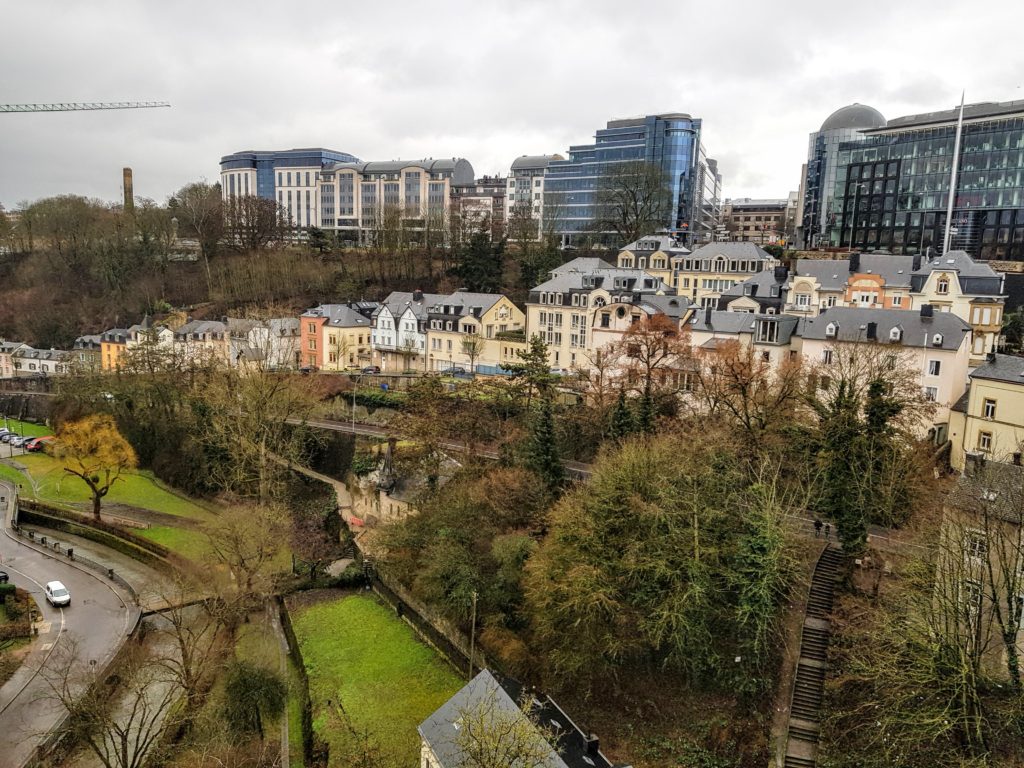
Bus number 29 will take you directly from the airport to the central station. Do you know that Luxembourg will be the first and only country which will make the public transport absolutely free? It is not a joke! It will be probably implemented in 2020. But for now it is paid. They have a really cool system though. The price of the ticket is 2 euros and the ticket is valid for 2 hours. You can change the transport as many times as you want during these 2 hours. Pretty cool, isn’t it? Every Saturday the public transport is free.
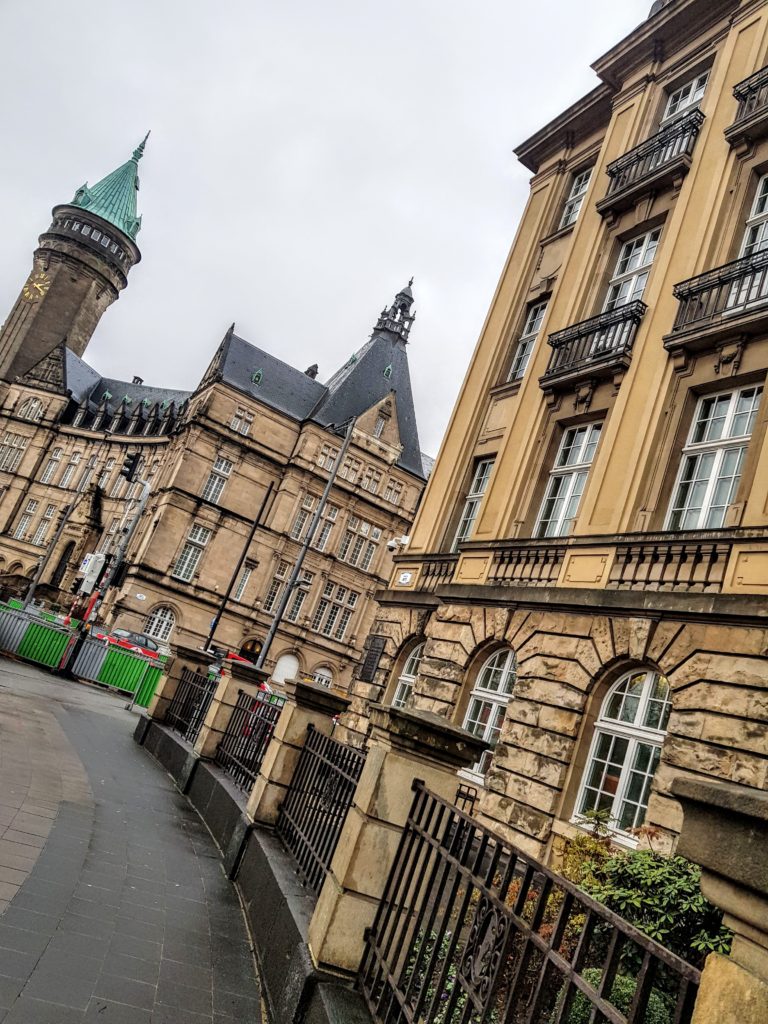
Here is my list of 20 interesting places to visit in Luxembourg (most of them are in Luxembourg city as I spent most of my time there):
- The old town of Luxembourg
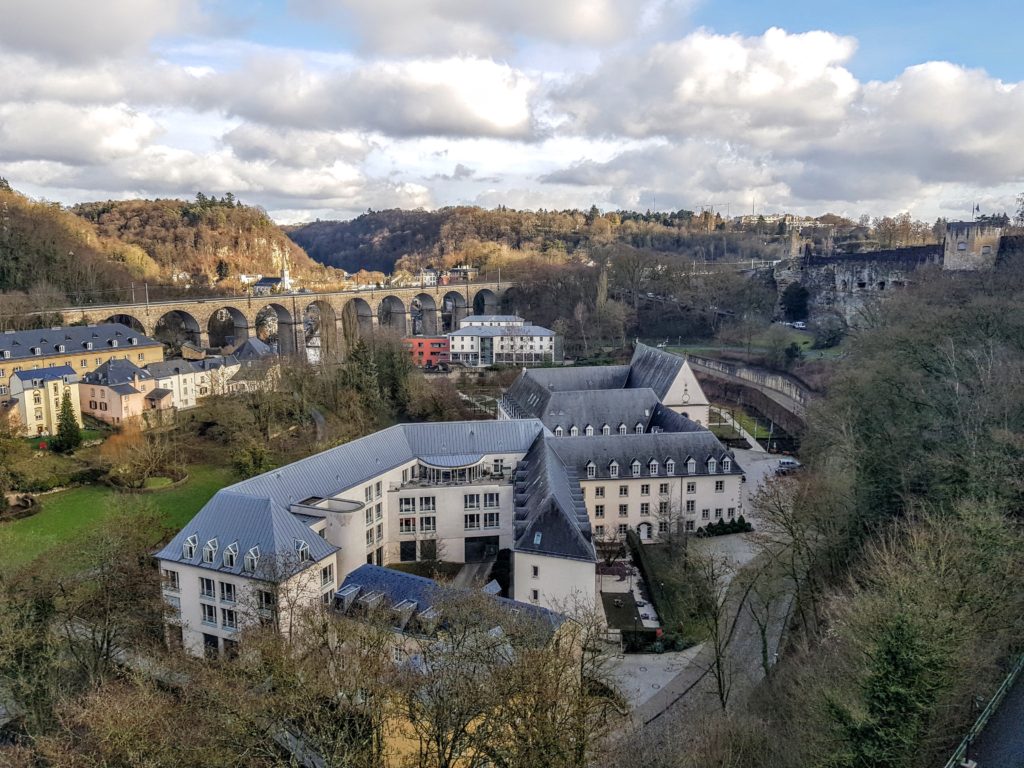
You can easily spend some hours just wandering around the old quarter of the city. You can still see the remains of the old fortress that was surrounding the town. The ancient landmark gives many spectacular views of the city from above, old bridges are crossing the river, narrow cobbled streets are lined with impressive traditional houses. I really loved this part of the city!
- Notre Dame cathedral
This Roman Catholic cathedral is the only cathedral in the country. It is a mix of Baroque and Renaissance architecture. The royal family graves are located in the crypt.
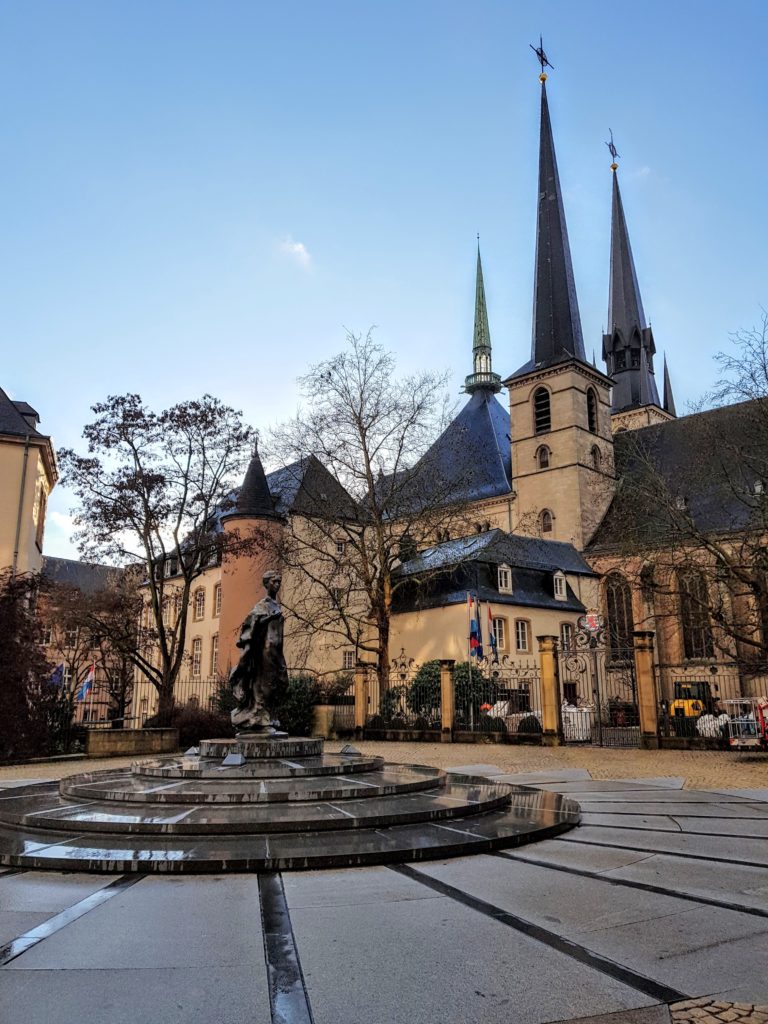
- Casemates du Bock
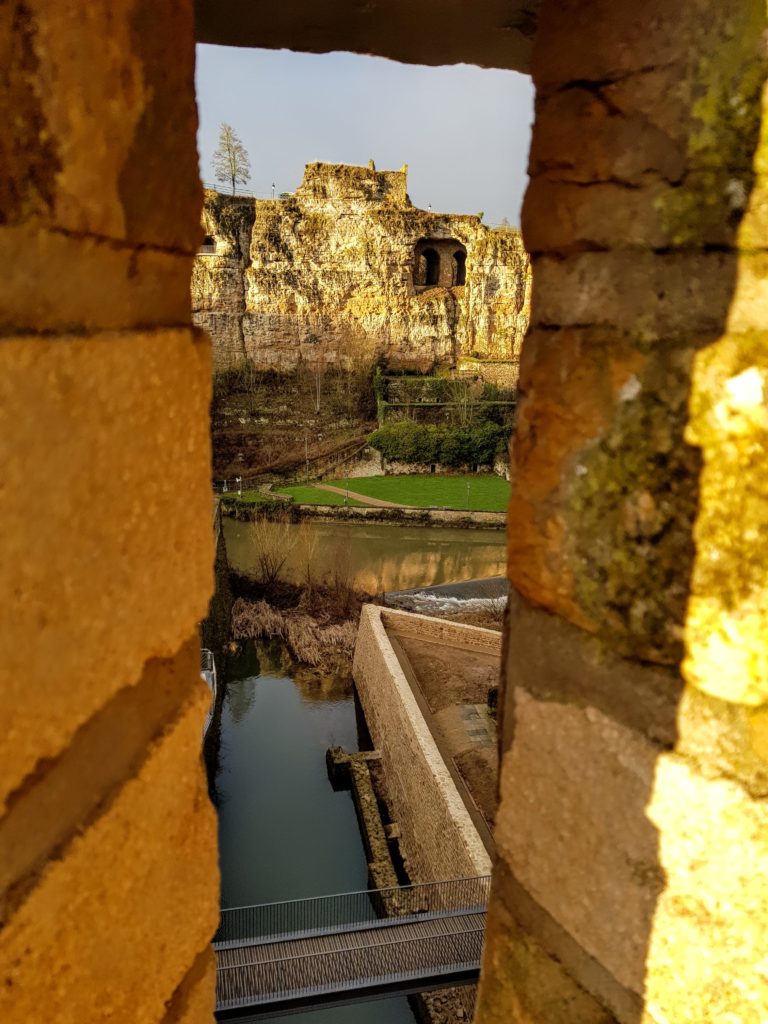
The Bock Casemates is a 17 kilometer long tunnel, initially carved out of the rock by the Spanish in the 18th century. Being a shelter for more than 35,000 locals and thousands of soldiers during the WWI and WWII, the casemates is known for its historical importance in Luxembourg. Consisting of atmospheric passages, different levels and impressive rock stairways, the historic tunnel of Casemates is a UNESCO World Heritage Site. Unfortunately it is closed during winter time between October and February and I was able to see it from distance only.
- Palais Grand Ducal
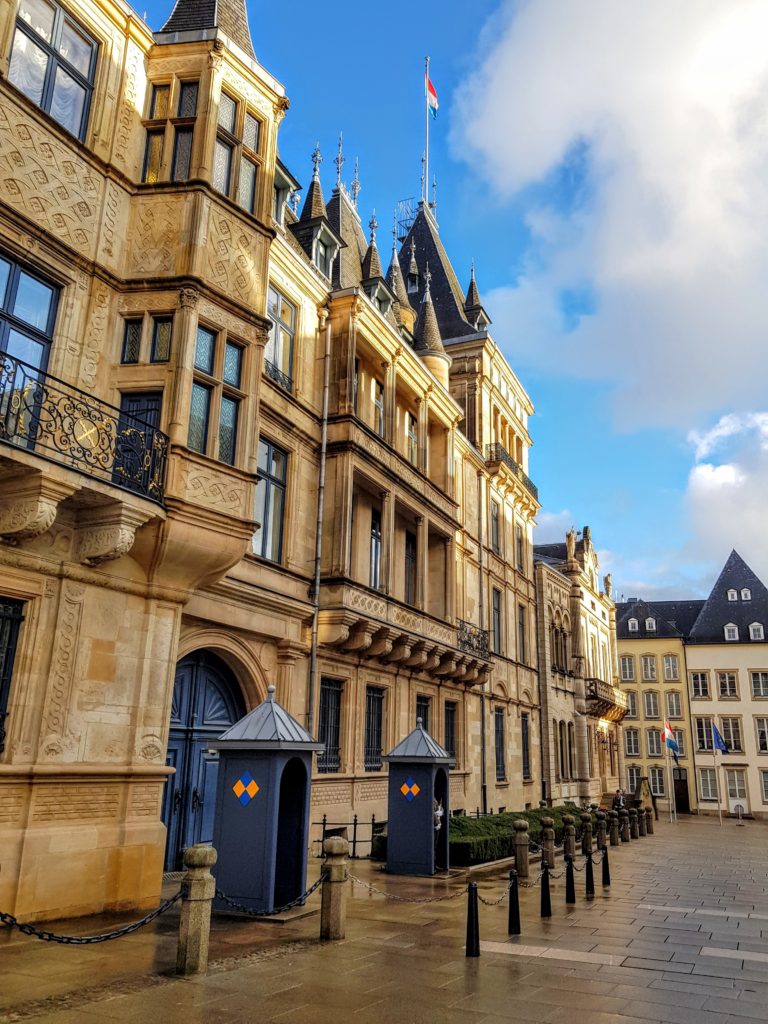
Impressive palace, initially used as a residence for the Duke and the royal family. While it’s still the full-time home of the Duke, the public are permitted an opportunity to visit it inside during special organized tours made available from mid-July to the first week of September, when it becomes one of the city’s most visited attractions. Nine tours are available daily, and are conducted in a variety of different languages, including English. Tickets are made available through the Luxembourg City Tourist Office from their office in Place Guillaume II.
Highlights of the tour include a chance to see the plush, elegantly furnished interior, including the ceremonial rooms used on significant occasions, such as visits by foreign dignitaries.
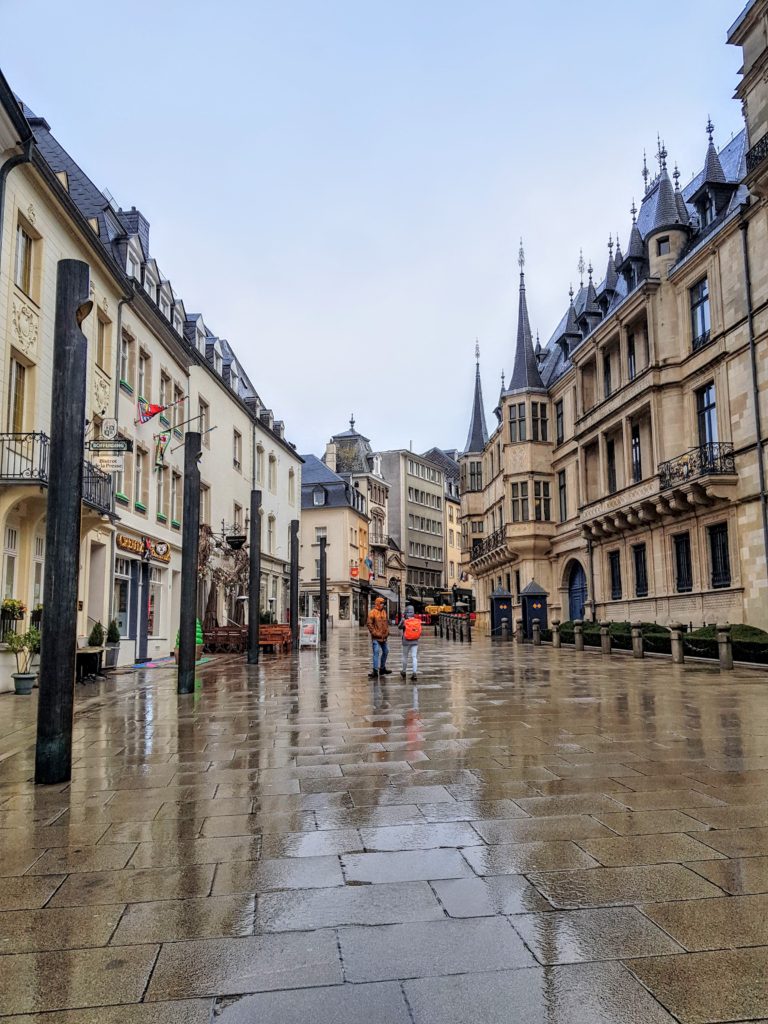
- Passarelle Viaduc
Also known as the Old Bridge, it connects the city center with the rail station. It provides spectacular views towards the city.
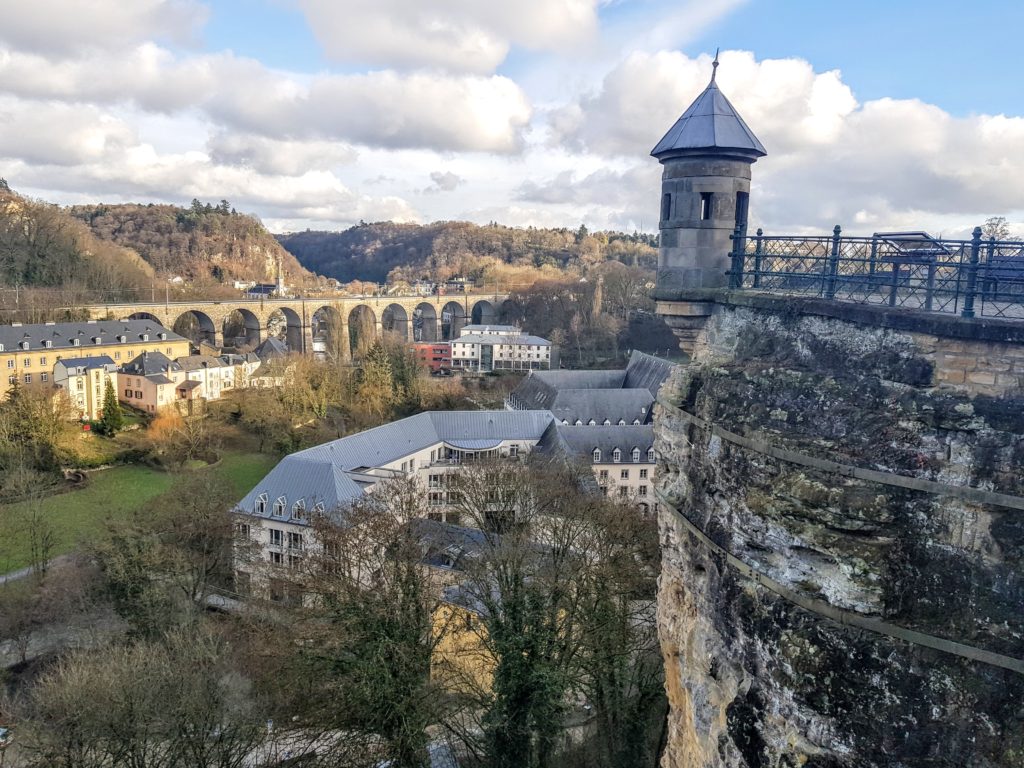
- Place Guillaume II
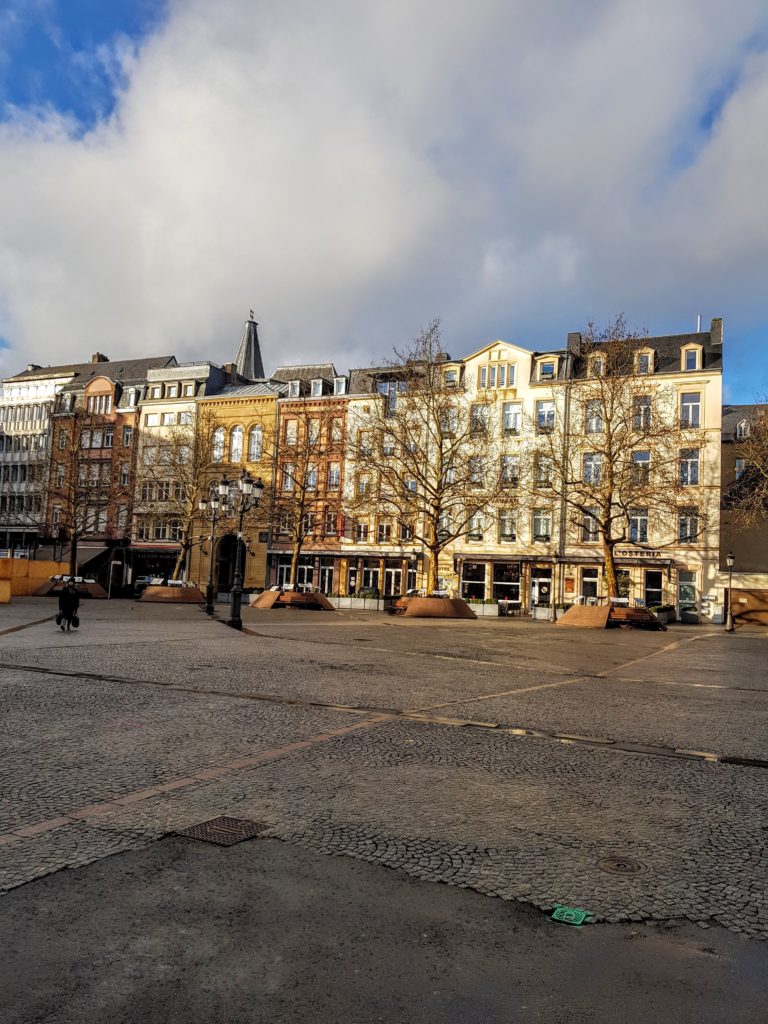
The square Guillaume II is a large square in downtown Luxembourg, also called the “Knuedler”. The name derives from the knots on the frocks of the Franciscan monks whose monastery was located nearby.The statue in the middle of the square depicts William II, King of the Netherlands and Grand Duke of Luxembourg.The City Hall is on the square, as well as the Luxembourg City Tourist Office providing with free maps and lots of information on Luxembourg City.
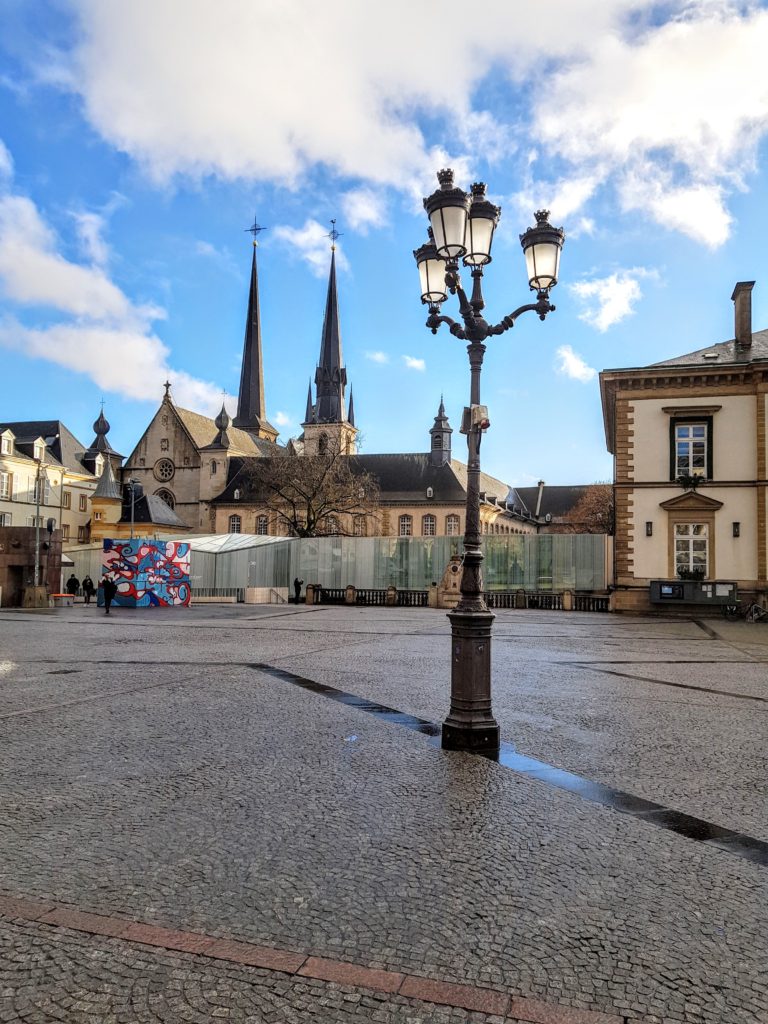
- Walls of the Corniche
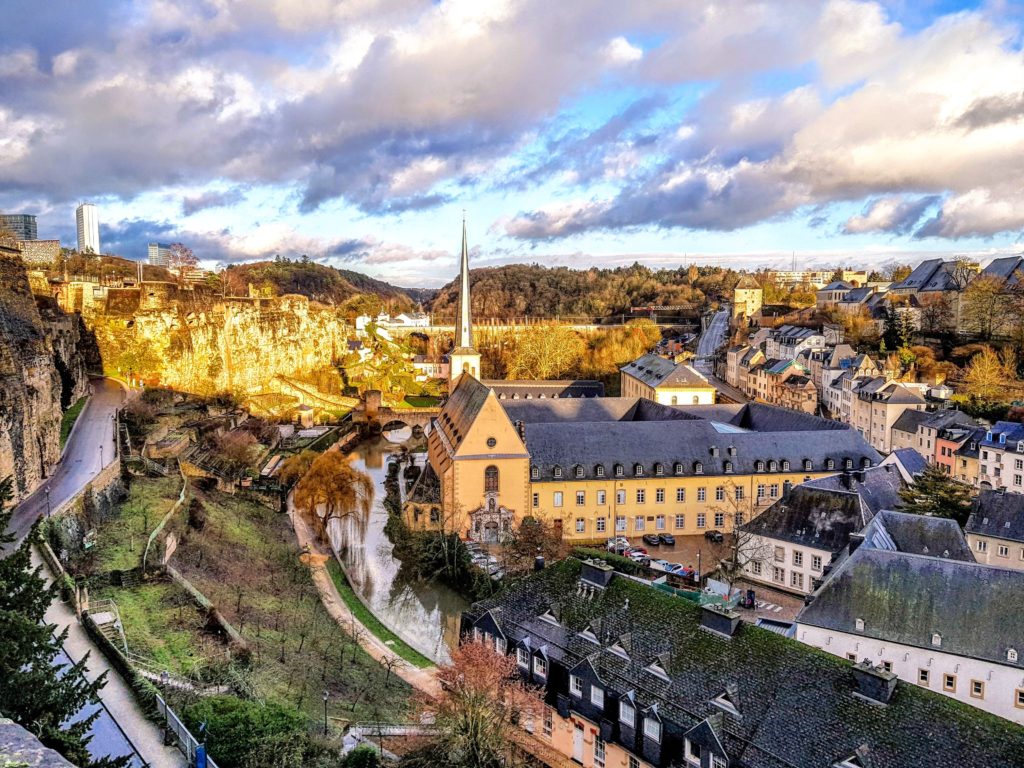
The spectacular Walls of the Corniche (le Chemin de la Corniche) in Luxembourg City have been called “the most beautiful balcony in Europe,” towering as they do over the old city in the river valley below. It’s here you’ll find the big Gate of the Grund dating from 17th century. Its ramparts reveal several aristocratic houses and refuges. I really found this breathtaking view by chance, I was heading to the Grund quarter when I saw the stairs. The view from the wall is truly spectacular!
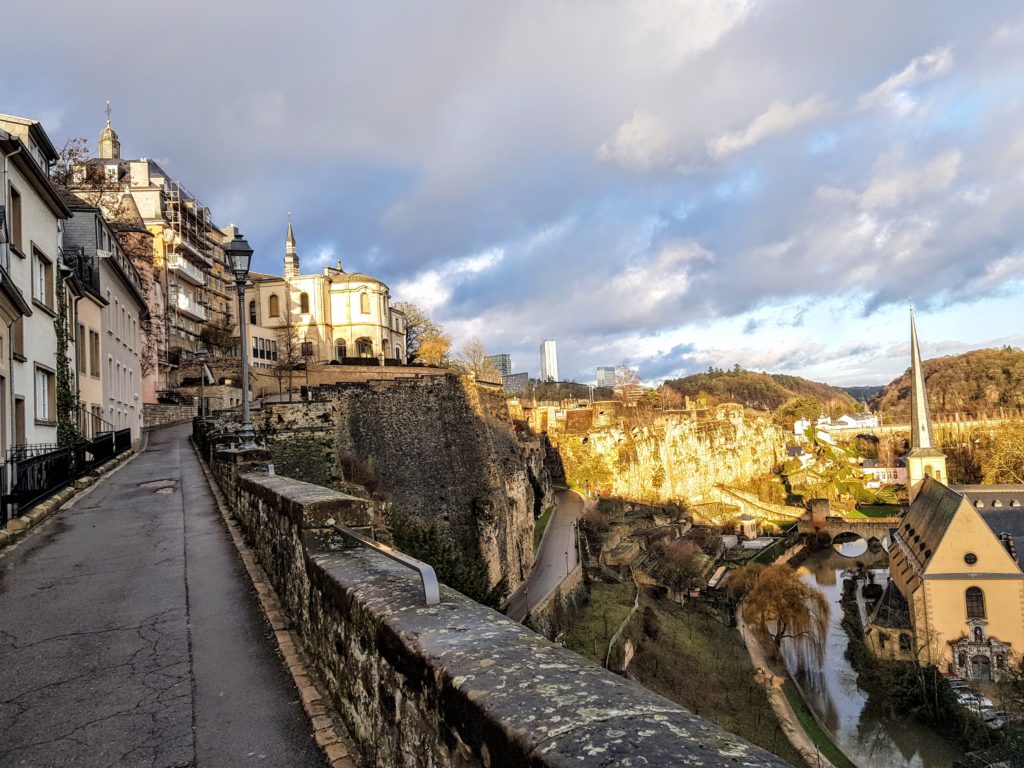
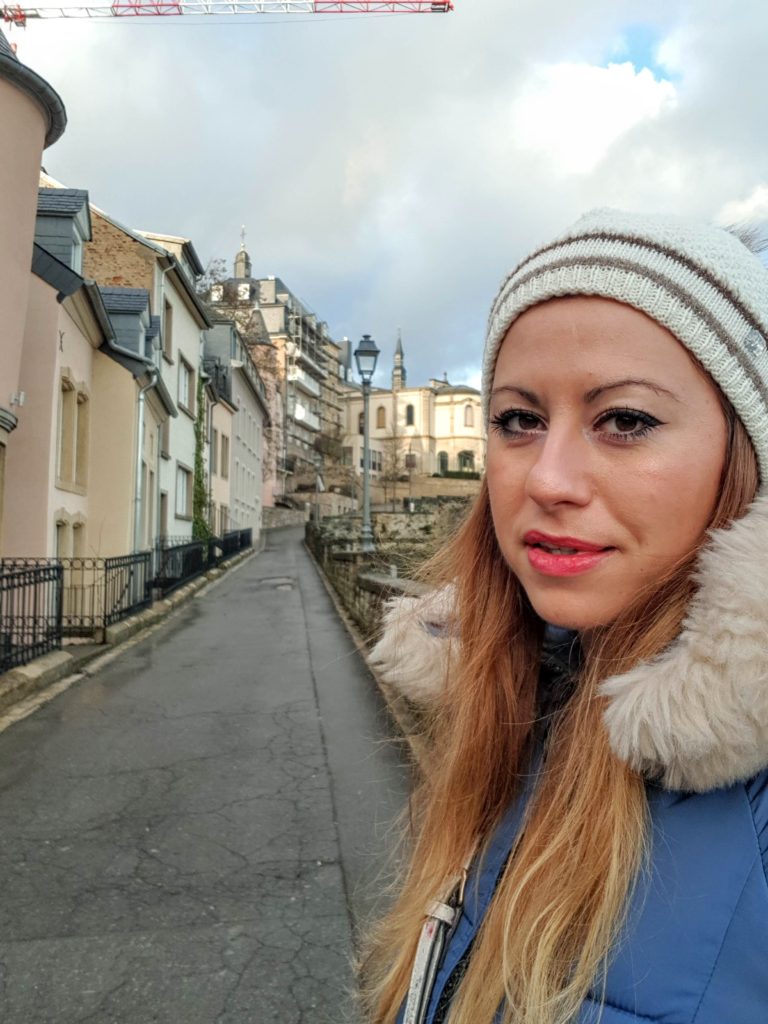
- Grund
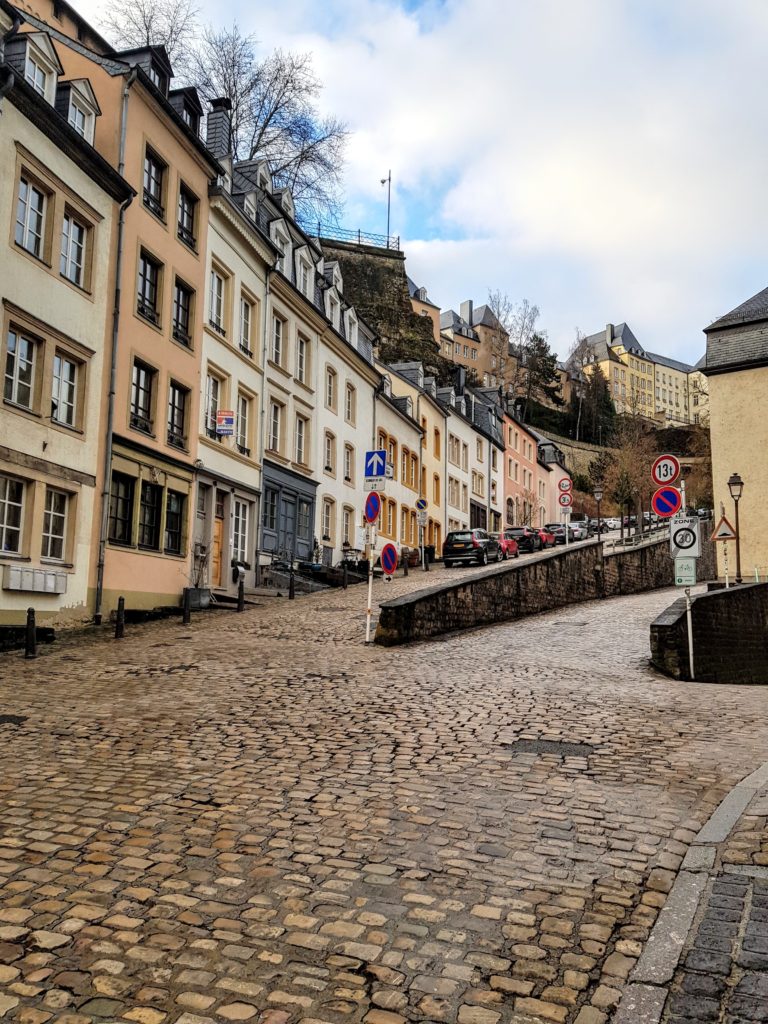
The Grund area is calm and still has the feel of a small village; it is a nice place for a walk and an ideal place to stroll in Luxembourg. With its quiet and relaxing atmosphere, the Grund district is a great place to wander around, in both summer and winter, to enjoy the beautiful landscapes surrounded by trees, stone buildings and ancient bridges. There, simply look up to enjoy a magnificent view of the green heights of the center of the city or discover a detail on the historic buildings.
Located in a basin, you will have to go down the small winding cobbled streets and along the water points to be able to walk in the Grund. But it’s worth it!The place was historically the most populated area in the seventeenth century. Today, the Grund is a district with less than 1,000 inhabitants and is preserved from traffic. The Grund today is a charming place, which beautifully combines its architectural heritage, culture, and places to go out.
- Pfaffenthal Lift
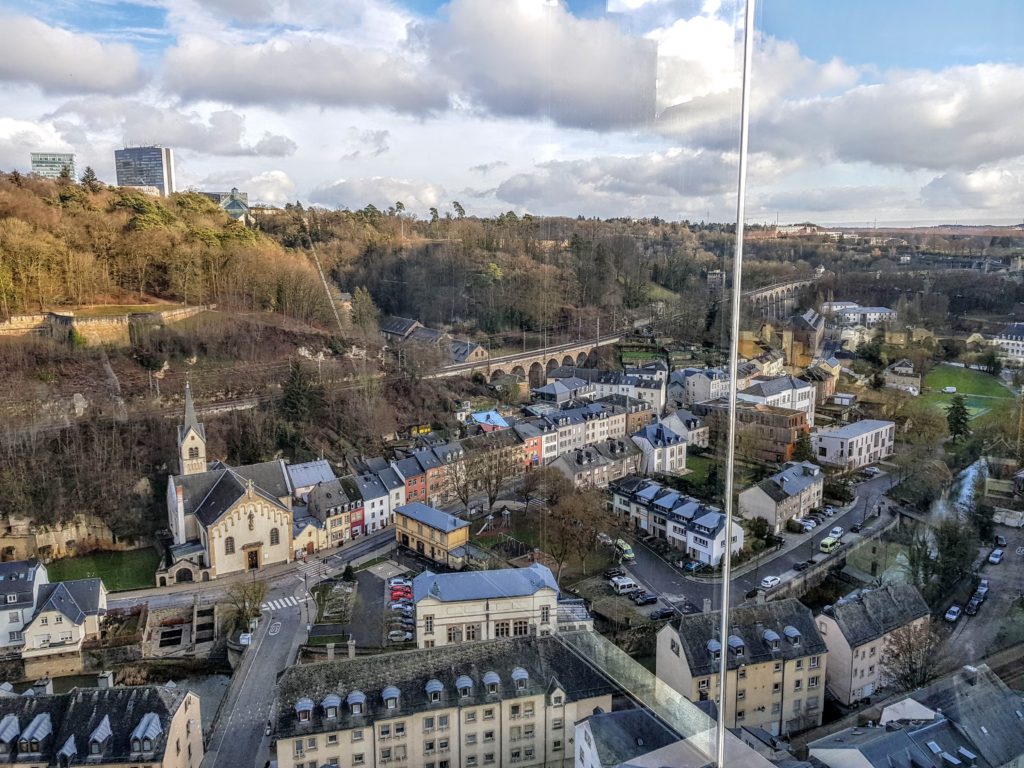
The new glass elevator connects the “Pescatore” park located in the city centre to the Pfaffenthal area at the bottom of the Alzette valley. The ride in the glass elevator features sweeping views (71m high) for pedestrians and cyclists alike. Using the elevator is free of charge.The elevator is out of order due to maintenance (from 9.00 am till 5.45 am the following day) every first Monday of the month.It took me a while to find how to get to it, but once I found it I was absolutely amazed by the view!
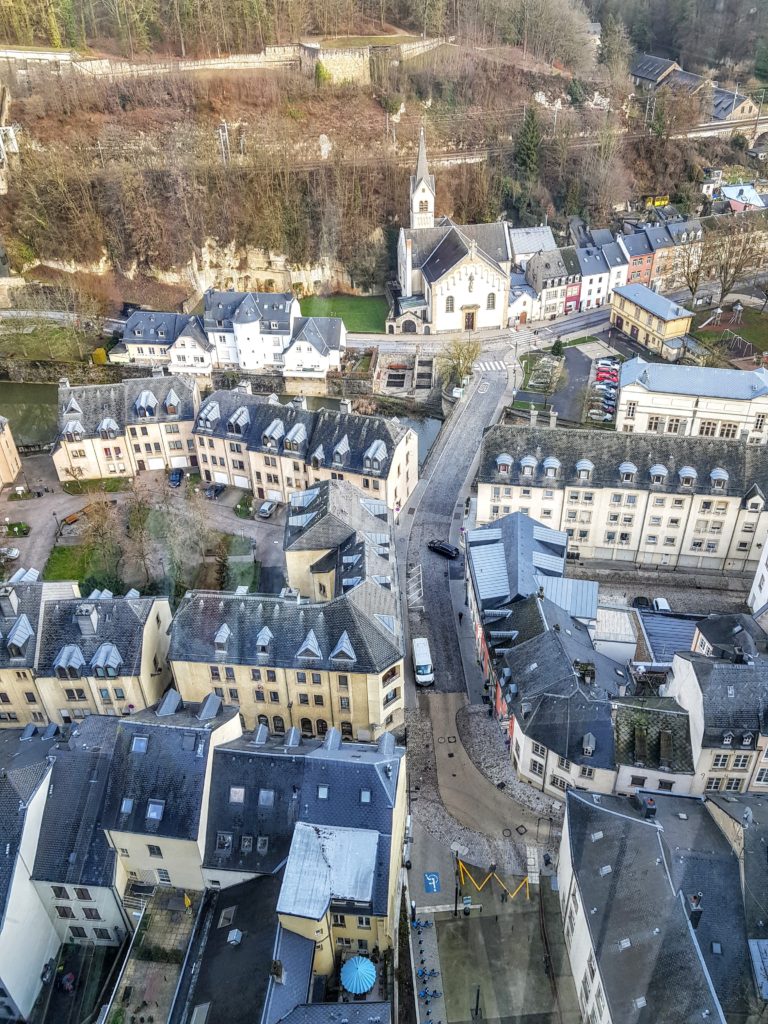
- Abbey of Neumünster
The abbey is located in the Grund district. Neumünster was opened to the public in May 2004 as a meeting place and a cultural centre. It hosts concerts, exhibitions, and seminars.
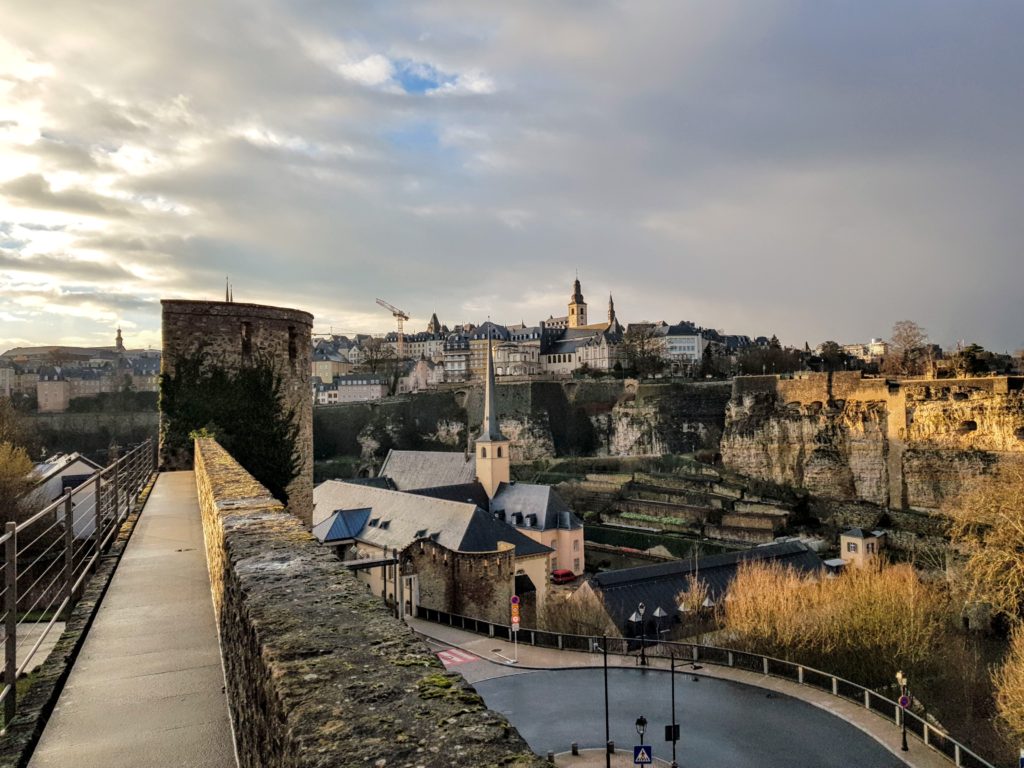
- Pont Adolphe
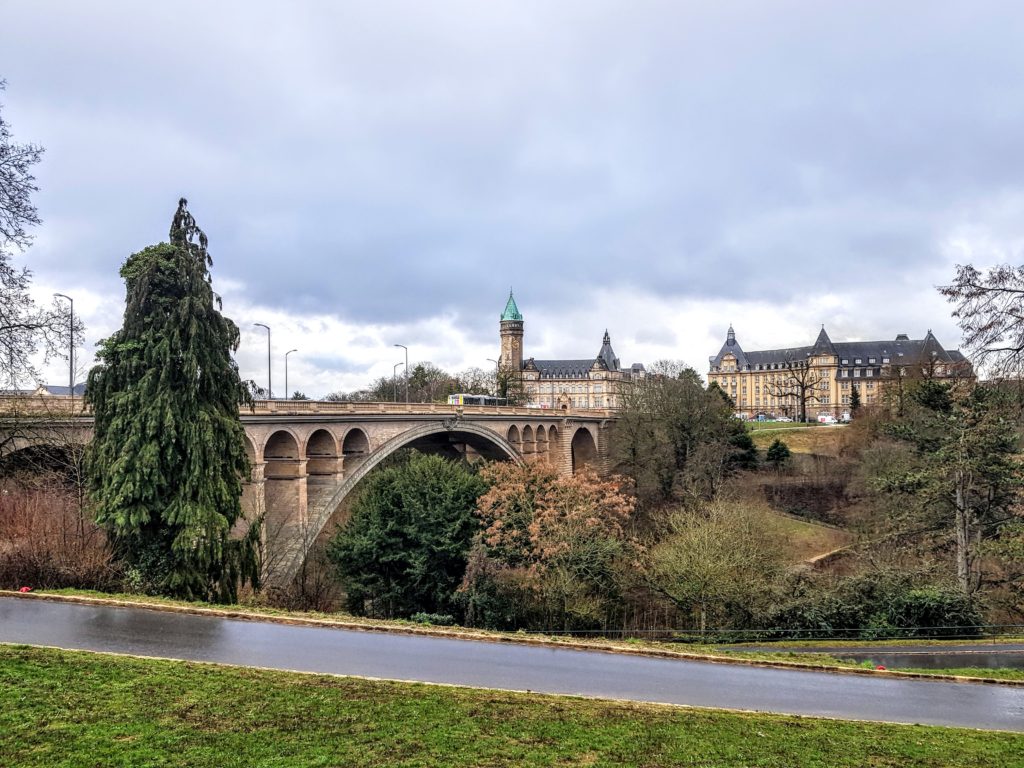
It is an arch bridge named after Grand Duke Adolphe. It is one of the main roads in the city. It also known as the New bridge.
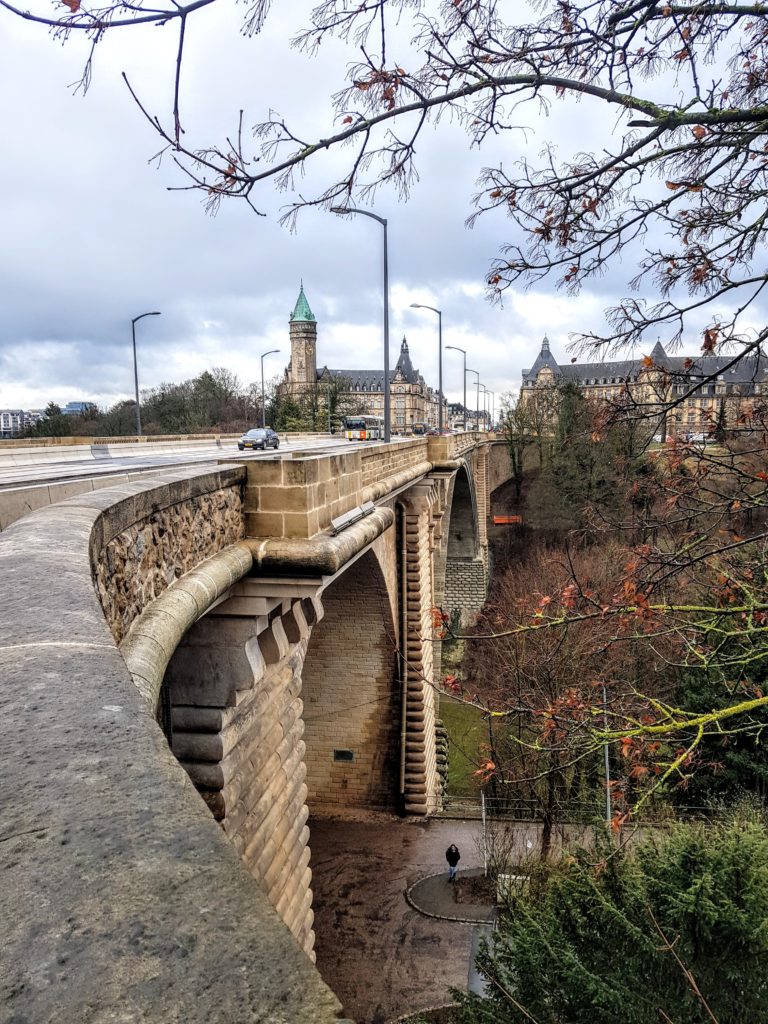
- Philharmonic
Luxembourg may be small but the Philharmonic of Luxembourg is known for being one of the premium concert venues in Europe.It is the home of the Orchestre Philharmonique du Luxembourg and guests play here from all over the world including a range of famous conductors and orchestras.The building is known for its powerful acoustics and you can come here to take in a local concert that showcases the best musical talent in Luxembourg.
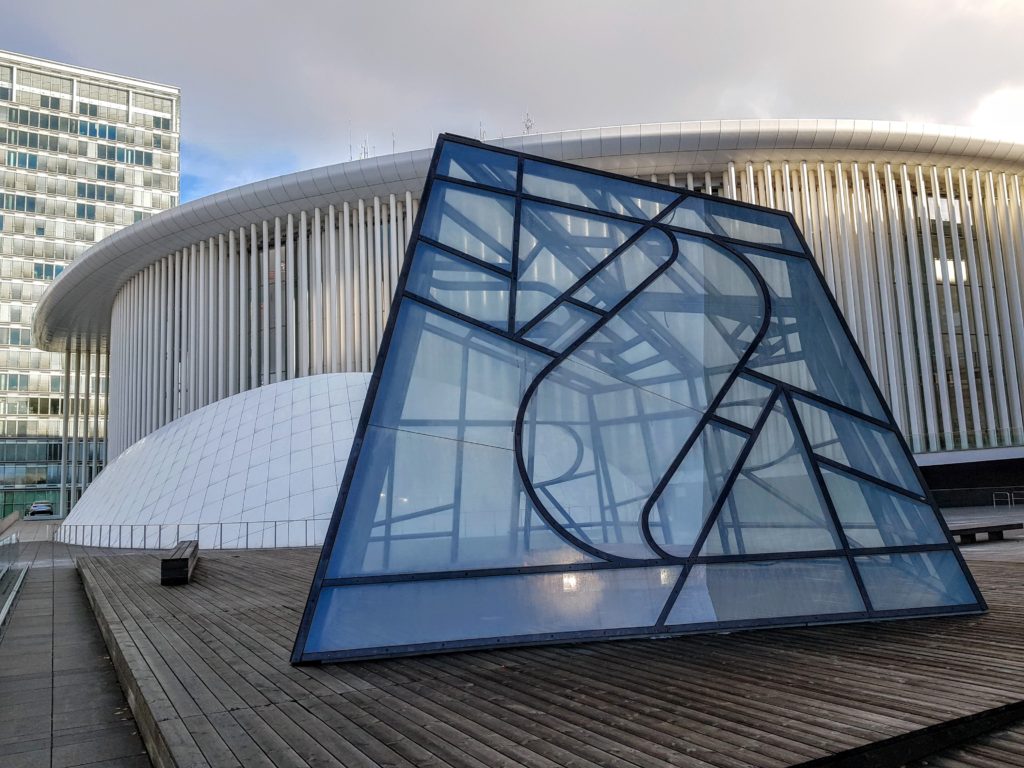
- Kirchberg – European institutions’ buildings
The neighborhood is also home to one of the several seats of the European Union. The European Court of Justice, the European Investment Bank and the European Court of Auditors are also located here as well as the Philharmonic and the museum of the modern art
- Monument du souvenir
The monument is located at Place de la constitution.The “Gëlle Fra”, a monument which is located on this square, was set up to commemorate the Luxembourgers who perished in the First World War, today it symbolizes freedom and resistance for the Luxembourg people.
- Lambert Redoubt
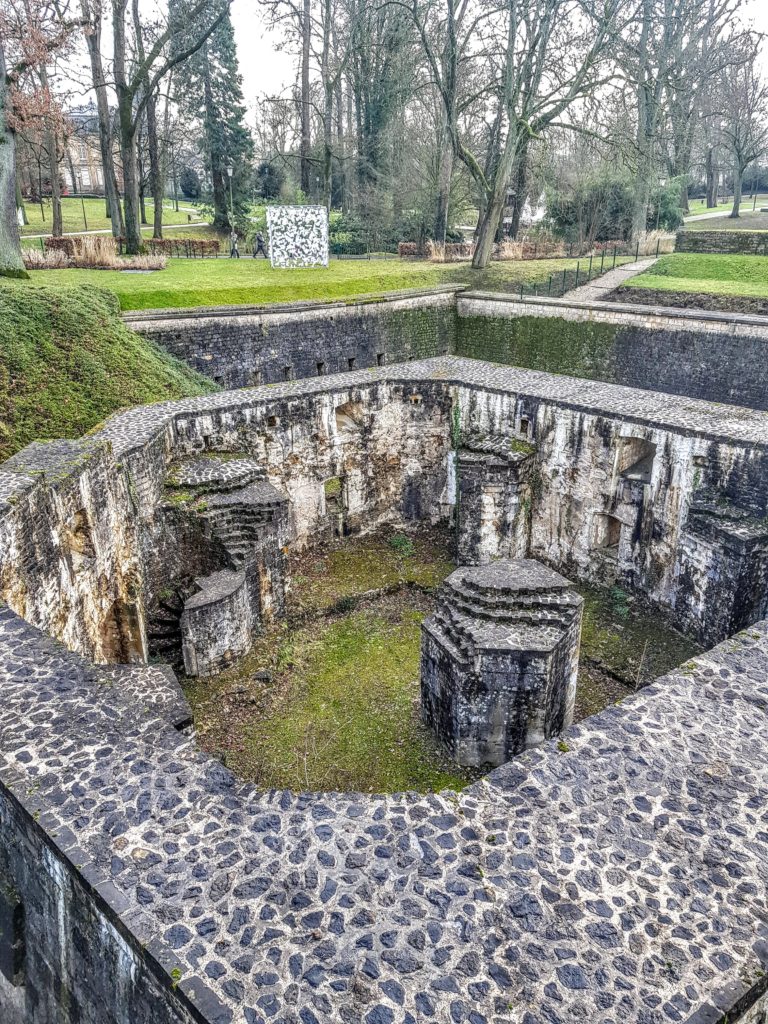
The Lambert Redoubt was part of a fort of the same name. Constructed in a pentagonal form, it contained two floors and was surrounded by a network of casemates which are still in excellent condition today.
- Tours Vauban
The towers were incorporated into the old fortress to reinforce the walls.
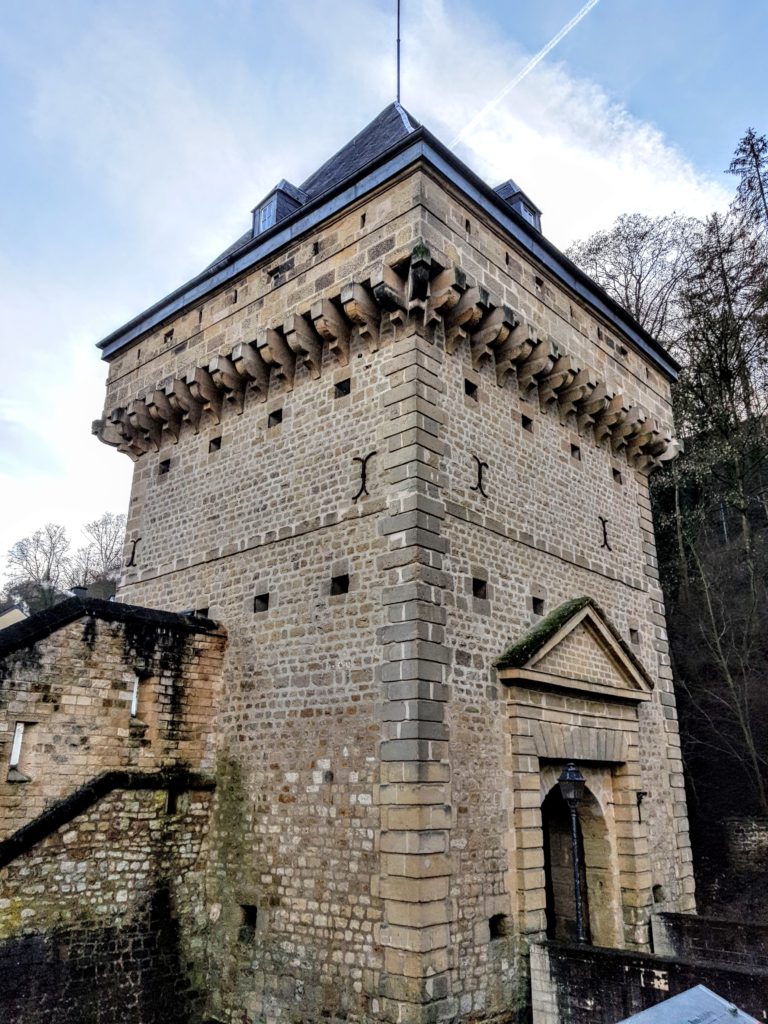
- Roude Petz marker
Located at the end of Grand Rue by Rue du Fossé, the “Hämmelsmarsch” fountain, also known as the “Roude Pëtz”, represents the Luxembourg traditional mutton parade. The 2.80-metre-tall bronze fountain represents a music band – an accordion player, a drummer, a tuba player and a horn player – together with sheep and two children holding an umbrella, protecting them from the “rain”, or the water dropping from the well.
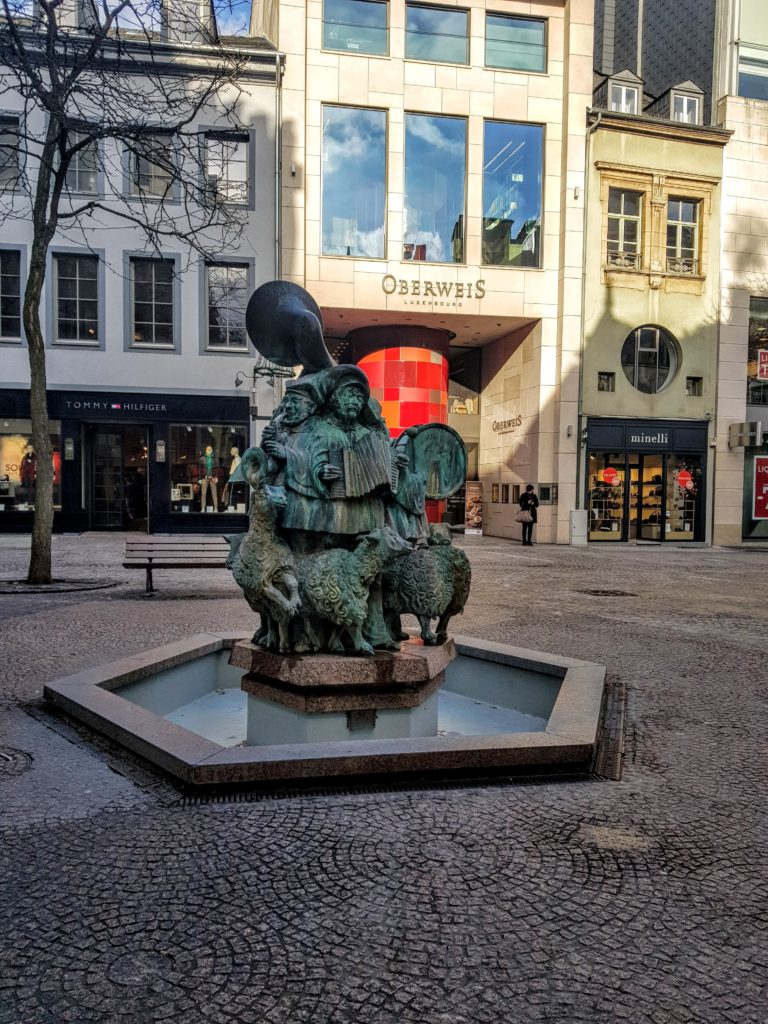
- National museum of History and Modern Art
I haven’t been inside (surprisingly!), but the building is quite impressive from outside. Located in the historic Fish Market area (the old town center), the MNHA’s collections – art objects, archeological finds, furniture, tools, coins, arms, and documents dealing with the history of the country – are housed in a stunning new building.
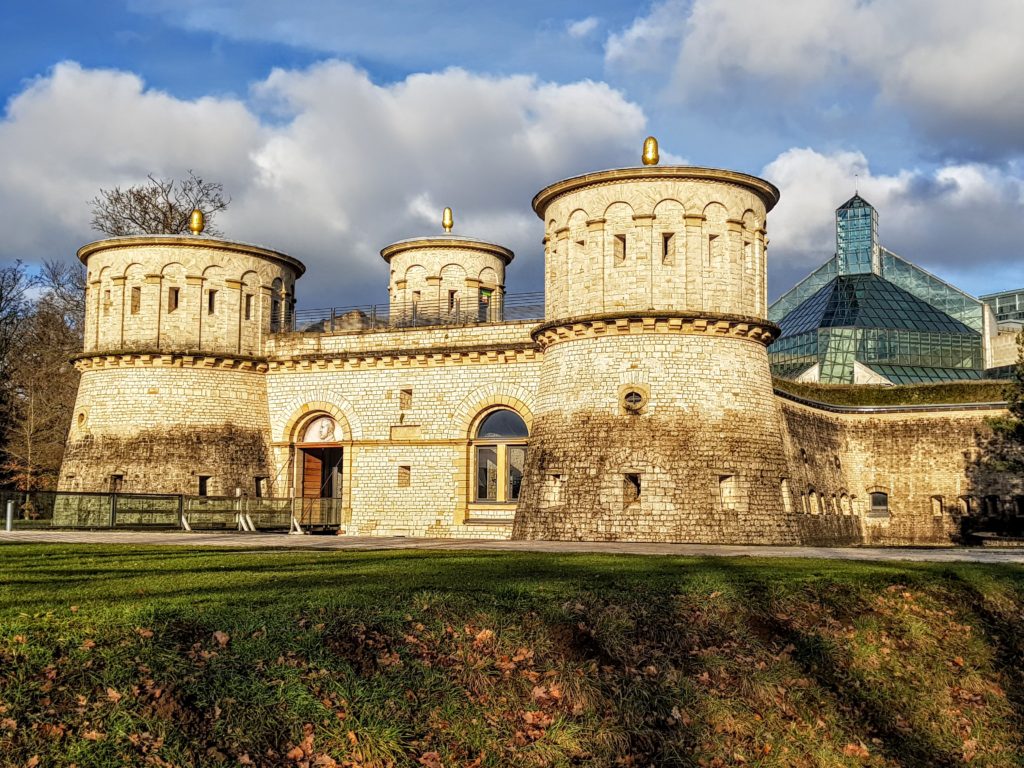
Again – I found it by chance, trying to find my way to the Philharmonic.
- Vianden town
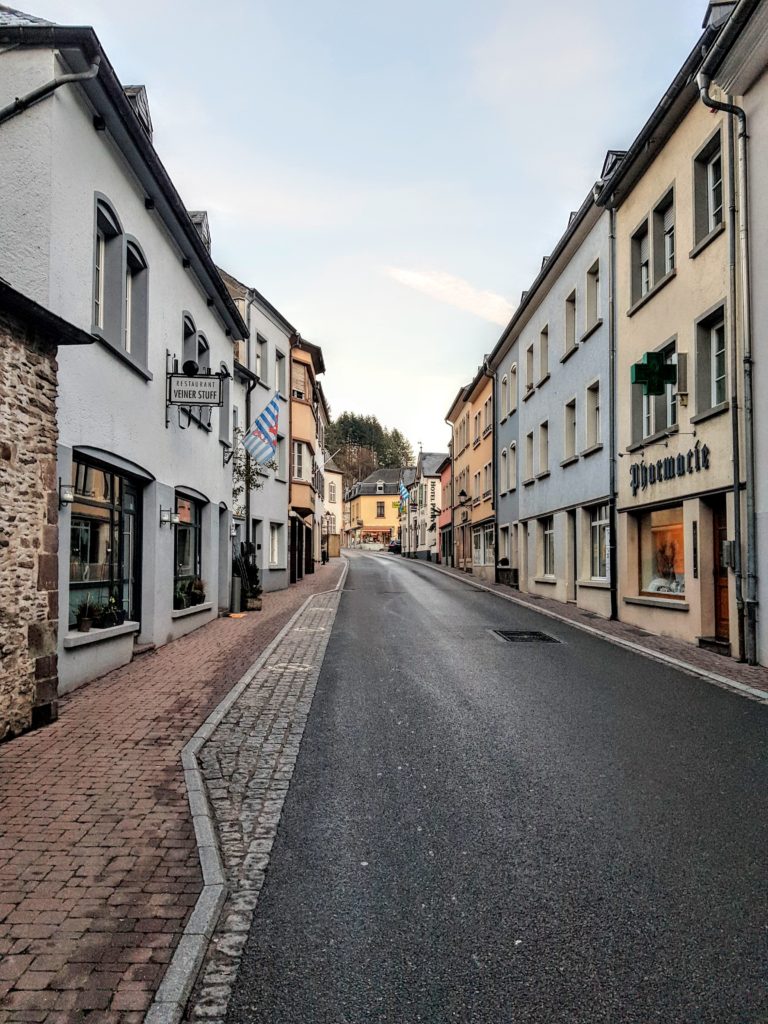
Vianden is an extremely picturesque town straddling both banks of the River Our. Also of note is the medieval outer wall encircling the town with many impressive guard towers. If you can, try to time your visit to coincide with the annual Vianden Medieval Festival, held the first weekend of August and popular for its jousting and sword fighting tournaments, its market, and knights’ camp.
The house where author Victor Hugo lived during his exile in 1871 now houses a collection of souvenirs of his various visits to Vianden. A large network of walking paths, well maintained and signposted, offers access to the beautiful countryside of the Our Valley, and a chairlift climbs to a height of 440 meters where visitors can enjoy splendid views.
- Vianden castle
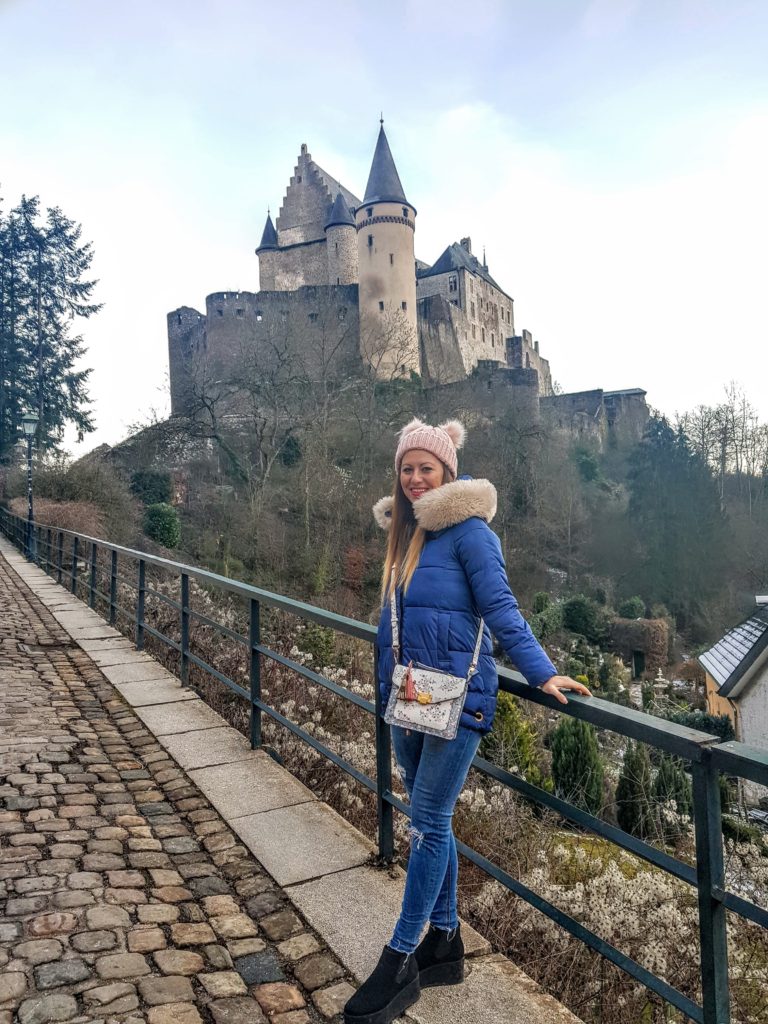
Vianden Castle was built between the 11th and 14th Century on the foundations of a Roman castle and a Carolingian refuge. This Castle-Palace bears the Hohenstaufen characteristics and is one of the largest and finest feudal residences of the Roman and Gothic eras in Europe.
Luxembourg’s nightlife
Lubembourg also has vibrant nightlife. As I mentioned above the variety of nationalities living there helped the city to develop rich diversity of places to eat and drink. For my four days stay in the city I could say that we have visited many places, some of them I liked a bit better than others, but in general I really enjoyed Luxembourg’s night life!
Here are my recommendations for excellent restaurants and bars in Lux:
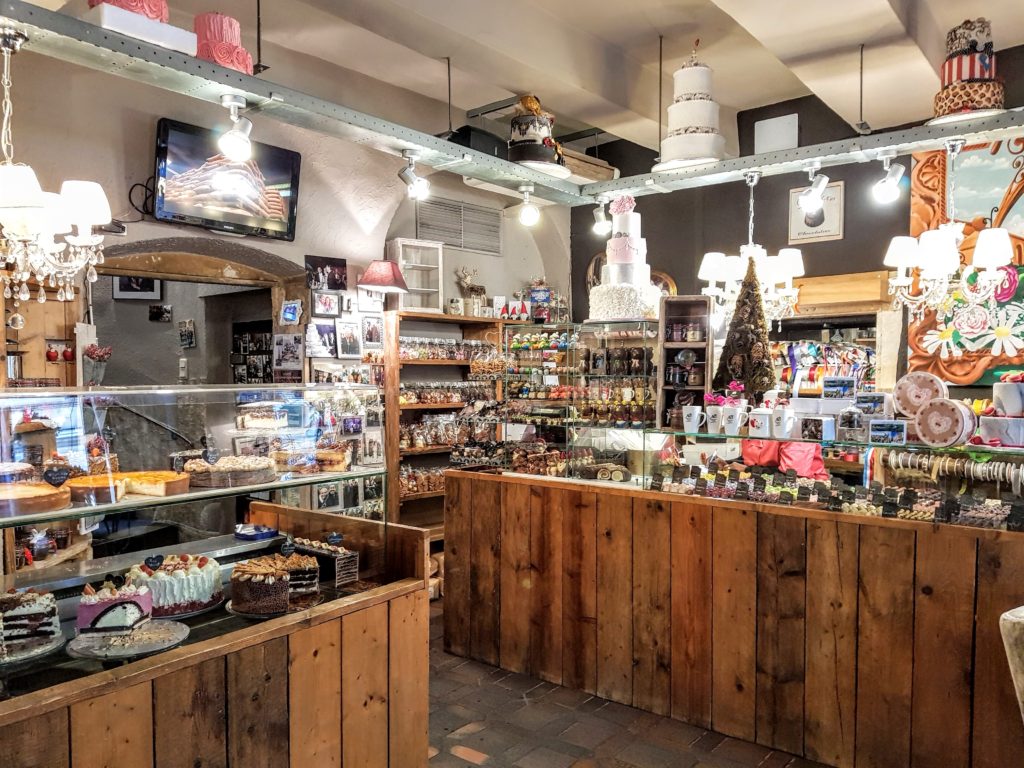
The Cocolate House is situated in front of the Grand Ducal Palace. So take your seat, enjoy a Hotchocspoon, and relax.
Located close to the central rail station. Nice place to have a bite and a drink.
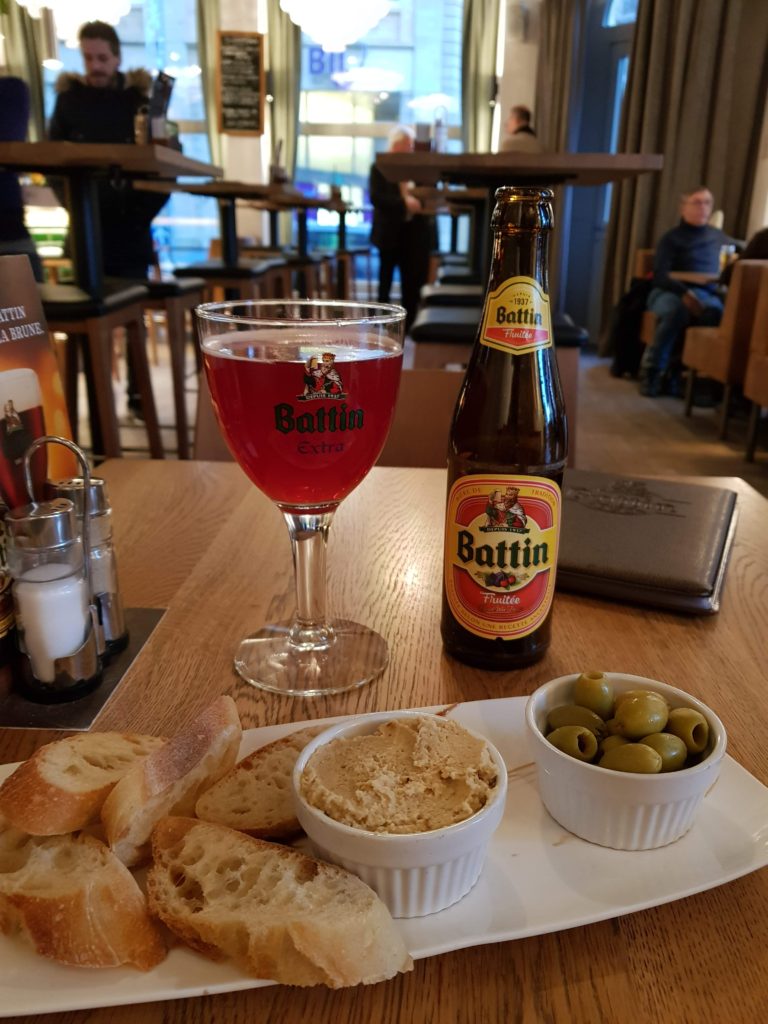
One of the hottest bars in town, pretty close to the central rail station. The place has delicious cocktails, cool music and friendly staff.
Another trendy bar in the down town.
Delicious Greek restaurant. In 2016 it was ranked as the 3rd best restaurant in Luxembourg.
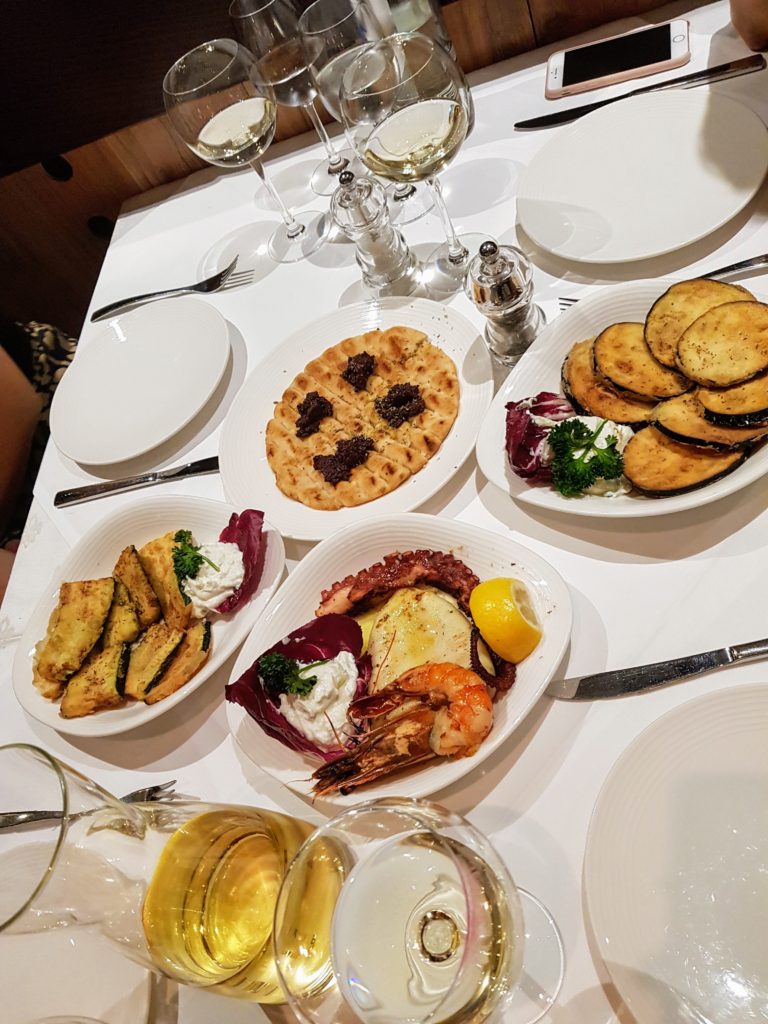
The Gin bar of Luxembourg. The bar offers tens of different flavors of Gin. You can sit outside even during cold weather – the benches outside are being heated! Cool isn’t it?
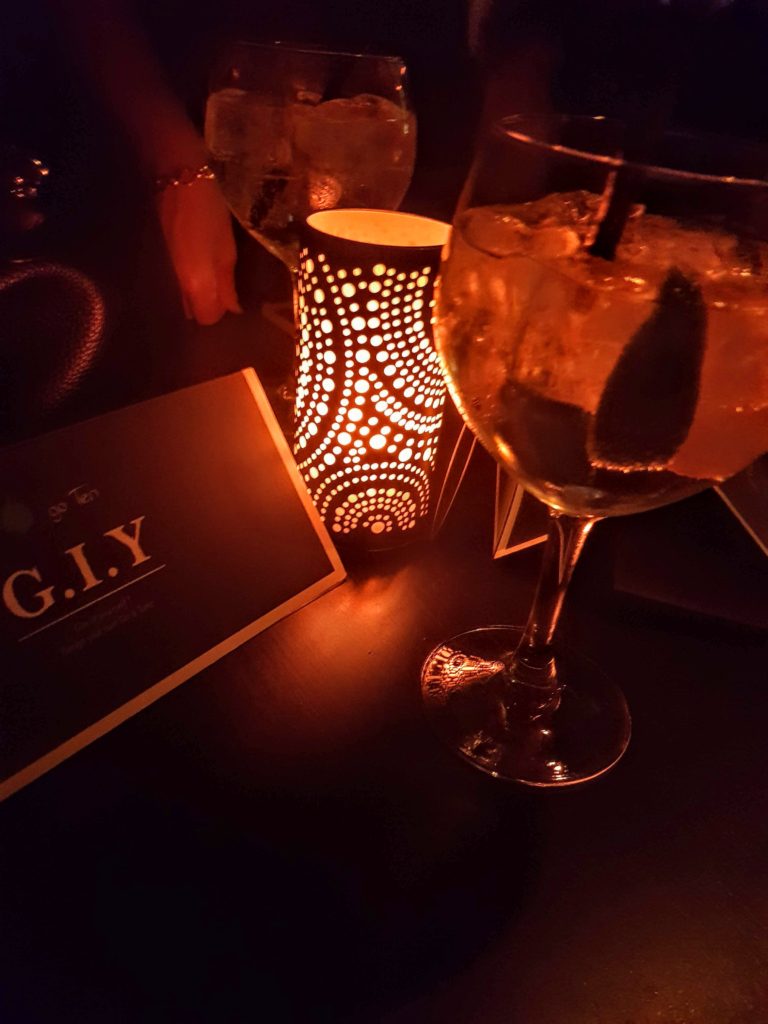
Bar/club. It is spacious and pleasant. Popular for after work gatherings, especially during the summer as it has a nice garden.
In a summary, I could say that Luxembourg was a nice surprise. In the heart of Europe, this small country offers big variety of beautiful landscapes, historical heritage and modern attractions. If you haven’t been there now is the time to plan your long weekend in Luxembourg.
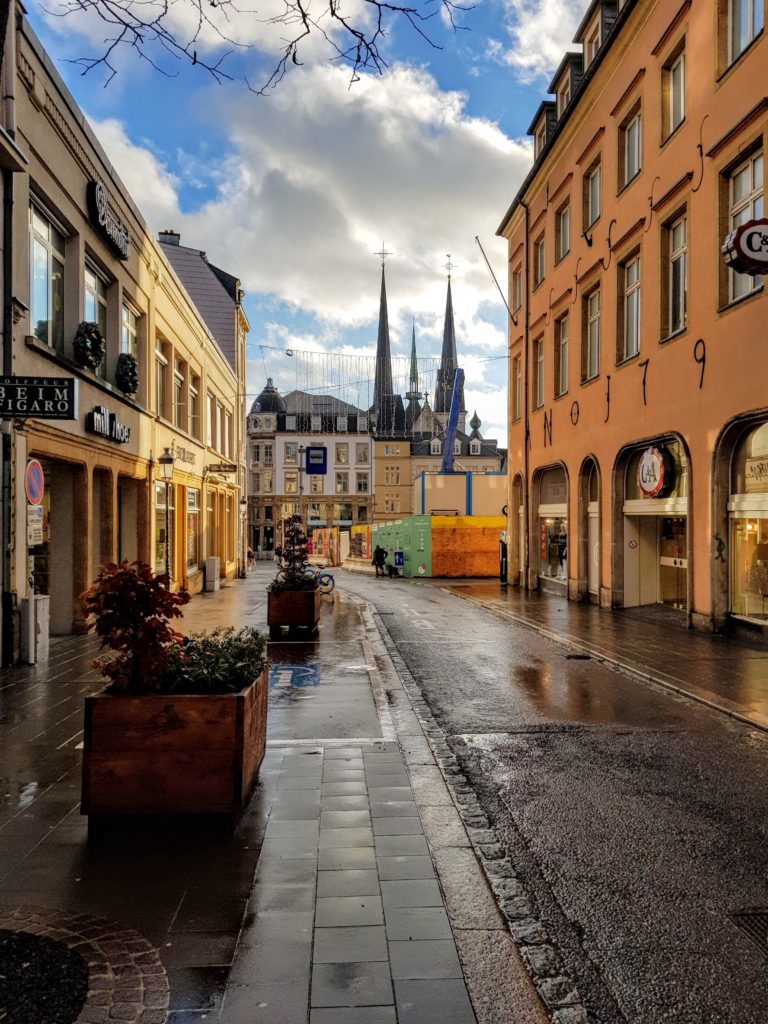
This is all, folks! More interesting destinations you can find in my travel section.
See you soon when Travelista goes to…
